
- Malawi’s Regions
- North Malawi
- Central Malawi
- South Malawi
- Malawi’s Experiences
- Sports & Wellness
- Malawi Accommodation Filter
- Special Offers
- Accommodation
- Tours, Safaris & Activities
- International Agents & Tour Operators Offering Malawi
- Holiday Planner
- Getting There
- Getting Around
- Touring Malawi
- Travel Advice
- Responsible Travel
- Family Travel
- Info Packs & Downloads


Lilongwe Wildlife Trust offer one-of-a-kind veterinary course in Malawi

Orbis DMC Newsletter: From Malawi to Berlin, Business Workshops & Historic Cottages

Top 10 Must-Visit Destinations in Malawi
Thursday, 28 March 2024
Travel writer Sarah Kingdom has put together this wonderful article showcasing 10 ‘Must-Visit Destinations’ for your Malawi holiday. From safaris to beaches and scenery to cities, check out the list below to uncover some of the country’s biggest hotspots waiting to be discovered.
With its incredible National Parks, sought-after wildlife, extraordinary landscapes, beautiful lodgings, captivating culture, tea and coffee farms, laid-back cities and rich history, Malawi has earned itself a place on the world tourism map with very good reason. For a sand-and-safari experience, few African nations are able to outshine Malawi.
Many visitors to Malawi head straight for the lake and, given the wealth of activities and range of accommodation available there, we’d certainly recommend spending a good part of your holiday here. But when planning where to go in Malawi, don’t limit yourself just to the lake, there are plenty of other magical locations worth leaving your hammock for. So, where will you go first? Let’s dive in!

1. Lake Malawi
Taking up a fifth of the country, Lake Malawi has lovely sandy beaches, rocky islands, and calm, clear, tropical waters teeming with so many colorful tropical fish that you’ll feel like you’re swimming in a giant aquarium. Most travelers to Malawi make a beeline for the lake – snorkeling, diving, sailing or kayaking are all available here. Meanwhile, life on shore moves at a leisurely pace, giving visitors plenty of time to relax.
Those intrepid travelers might want to catch the MV Ilala Ferry, a ship that’s been running for 70 years.

2. Mulanje Mountain Forest Reserve
Rising like a great backbone of stone from the plains of southern Malawi, and just a stone’s throw from the border with Mozambique, is the Mulanje Mountain Forest Reserve – definitely one of the country’s most breathtaking sights. Mount Mulanje is the highest peak in Malawi, indeed in the whole of Central Africa, and is a hiker’s paradise with rugged terrain, lush forests, and numerous peaks, including Sapitwa, the highest point. Hiking here can be challenging, so you’ll need to have a reasonable level of fitness and decent walking shoes.
For a change of scenery, journey to where Malawian farmers grow tea and coffee. First cultivated here by the British in the 1900s, Camellia sinensis (the tea plant) thrives in the higher elevation of the Shire Highlands, thanks to the cooler climate. You can hike or mountain bike here, or tour a tea factory and at Satemwa Tea and Coffee Estate.

3. Majete Wildlife Reserve
Only 40 miles from Blantyre, this 173,000 acre conservation area sits in the Lower Shire Valley. The reserve boasts the Big 5 as well as zebra, hippo, crocodile and numerous species of antelope, and well over 300 bird species.
A visit to Majete Wildlife Reserve supports an incredible conservation success story. Poachers and human encroachment had destroyed the wildlife in the park, but in 2003, the non-profit African Parks partnered with the Malawi Department of National Parks and Wildlife to reintroduce black rhinos, lions, giraffes and other animals. Two decades later, flourishing wildlife has brought both visitors to the park and economic opportunities to the community.
There are two lovely lodges in Majete – Thawale Camp and Mkulumadzi Lodge .

4. Liwonde National Park
A vast reserve of mopane woodland, marshy floodplains, swaying grasses and baobab groves, Liwonde is dominated by the broad Shire River that drains Lake Malawi. The river acts as a magnet for larger animals, and the best game viewing is often experienced while on a boat safari. Game drives explore the park’s expansive floodplains, the grazing grounds for sable and roan antelope, buffalo and impala, while night drives offer the chance to see jackal, hyena and serval. The park also boasts a rich array of colorful birdlife, with the birdwatching said to be among the best and most accessible in Central Africa.
Top picks for accommodation in Liwonde are Mvuu Lodge and the comfortable walk-in tents at Mvuu Camp – the latter better suited to families or those on a budget. Also check out the luxurious Kuthengo Camp and the rustic Chimwala Bush Camp .

5. Nkhotakota Wildlife Reserve
Nkhotakota Wildlife Reserve is Malawi’s oldest and largest reserve – known for its dense woodlands and riverine forests, intersected by three major rivers leading to Lake Malawi. Sadly by 2014, years of ivory poaching had reduced the elephant population to a mere 100 animals and what was once a sanctuary for wildlife had become an empty, silent forest. Fortunately, in 2015, the Malawian Government invited African Parks to sign a long-term agreement to manage the reserve and since then, the reserve has initiated a number of historic reintroductions. 2016 and 2017 saw one of the largest wildlife restoration initiatives to ever take place, with 500 elephants and 2,000 other animals reintroduced to Nkhotakota, followed by further introductions in 2022. These reintroductions have rekindled hope for the reserve and see tourists steadily returning to this lovely part of Malawi.
Three lodges of international standards have been built: Bua River Lodge , Tongole Wilderness Lodge and Kachenga Bush Camp , more recent sister property of Tongole. Just outside the Reserve on its eastern boundary (close to Lake Malawi) is Rafiki Safari Camp , offering luxury tented safari units and camping.

6. Nyika National Park
Nyika National Park is a high altitude paradise that offers a unique landscape of rolling grasslands, forested valleys and panoramic views. Day and night game drives provide visitors with chances to see herds of roan antelope, eland and zebra, as well as nocturnal creatures such as hyena, jackal and serval. The park also offers hiking and mountain biking, both of which are a great way to take in the gorgeous views and appreciate the space and solitude. This wonderful wildlife destination should definitely be on your list of places to visit in Malawi.
Chelinda Lodge with its beautiful pine log cabins and crackling fires is a great place to stay.

7. Chongoni Rock Art Area
Known primarily for its array of prehistoric rock art, some of which date back thousands of years, Chongoni Rock Art Area is a UNESCO World Heritage Site that’s perfect for any culture vultures traveling through Malawi. Reaching heights of nearly 6,500ft, with the peaks of the Dedza mountains, the area has evidence of habitation all the way back to the early Stone Age.

Zomba, the former capital of Malawi, has a bustling town center and grand old buildings. The colorful city market is worth a morning’s browse, but Zomba’s real beauty lies further up the slopes on the Zomba Plateau, a forested table-top mountain criss-crossed by streams and woodland trails. Walk to the lookout points of Queen’s View and Emperor’s View, or simply sit back and enjoy excellent meals and comfort at Zomba Forest Lodge . Either way, you’ll be rewarded with views so impressive they were described in colonial times as ‘the best in the British Empire’.

9. Lilongwe
Lilongwe is a well laid out city that offers travelers a taste of two different worlds – the urban feel of the new city, with its malls, smart hotels, embassies and modern office buildings, and the charming traditional feel of the old town, with its central market, outdoor cafés and lively restaurants.
Most travelers to Malawi only have a brief glimpse of the city while flying in or out of the country, but spending a day or two in Lilongwe is definitely worth it. Visit the market on Malangalanga Road, visit the Lilongwe Wildlife Centre, head to Kanelolo Curios Market for some souvenirs, hike up Nkhoma Mountain, or maybe play a round of golf.

10. Blantyre
Blantyre is Malawi’s second-largest city, a commercial hub and the gateway to the attractions in the southern part of the country. Travelers driving to Majete, Thyolo, Mt. Mulanje, Michiru Mountain and Zomba Plateau will all pass through Blantyre en route to their destinations.
History runs deep here. The town was named for Scottish explorer David Livingstone’s birthplace and was started as a mission base for the Church of Scotland in 1876. Relics of that era remain, including St Michael and All Angels Church and Mandala House, a national monument with a cafe and art gallery. Discover colonial architecture, impressive museums like the Chichiri Museum, and the vibrant vibes of Limbe Market on your visit.
For accommodation try Villa 33 with its beautiful gardens, great food and friendly staff.
Malawi’s diverse attractions cater to all kinds of travelers, whether you’re seeking natural beauty, cultural immersion, or wildlife encounters. Start planning your Malawi adventure and explore these top 10 must-visit spots that will leave you with unforgettable memories.
Other Recent Articles

Nkhotakota goes from strength to strength in African Parks’ 2023 Annual Report
African Parks, responsible for the management of 3 of Malawi's major national parks and wildlife reserves, have released their latest annual report. In this article, we look at their work in Nkhotakota Wildlife Reserve.

Malawi’s Zomba Forest Lodge makes Wanderlust’s Travel Green List!
Leading UK travel magazine Wanderlust has recently announced its second annual ‘Travel Green List’ and we are very proud to share that Malawi’s very own Zomba Forest Lodge has been included.

Majete reaches new heights in African Parks’ 2023 Annual Report
African Parks, responsible for the management of 3 of Malawi's major national parks and wildlife reserves, have released their latest annual report. In this article, we look at their work in Majete Wildlife Reserve.

Orbis DMC Newsletter: Why Malawi, Solo and Group Tours & Showcasing Malawi
Orbis DMC, a tour operator and activity provider in Malawi with strong connections to local community projects in which their guests can be fully involved, have released their latest newsletter.

June 2024 Newsletter
Our June 2024 Newsletter which includes all the latest tourism news of what's happening in Malawi has now been released.

Liwonde continues to thrive in African Parks’ 2023 Annual Report
African Parks, responsible for the management of 3 of Malawi's major national parks and wildlife reserves, have released their latest annual report. In this article, we look at their work in Liwonde National Park.

Fisherman’s Rest share excellent progress with community projects
Fisherman's Rest, an organisation in Malawi that do excellent work in local communities, whilst also running a lodge and a range of cultural activities for guests, have released their latest newsletter with an update on all the projects they're currently involved in.

Finding Paradise at Blue Zebra Island Lodge
In this third blog from Sukruti Gandham aka Just A Desi Chori, discover the delights of Blue Zebra Island Lodge on the serene and untouched beauty of the Marelli Islands.

- Login or Register

Takulandirani Ku Malawi
Enjoy the hospitality and the scenery of the Warm Heart of Africa, Zikomo
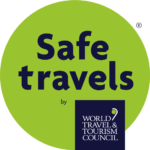
Nature and Wildlife
Lake malawi, people and culture, discover more.
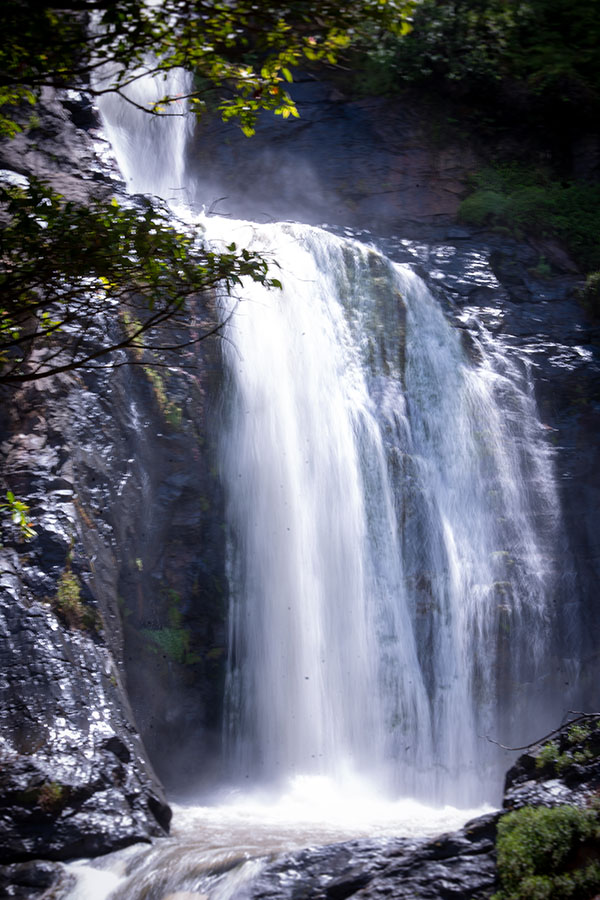
Prepare for your travel
Travel tools and tips.
Directory, Brochures and Videos
Visa,Immigration And Customs
Am I eligible for E-Visa, Apply for E-Visa, Check Status
Transportation
Road, Air, Railway, Water.
@TourismMalawi
- Registration
The 10 best things to do in Malawi

Mar 9, 2023 • 7 min read

From spending time on the lake to the very best wildlife watching, here are the top experiences in Malawi © Panthera Productions / Getty Images
For first-time visitors to Africa – and for anyone who is drawn to nature and outdoor adventures – Malawi is a wonderful destination.
This tiny sliver of a country has many superb places to visit , offering scenic diversity, from the vast, idyllic Lake Malawi and the zebra-dotted high plains to the epic heights of Mt Mulanje and the escarpment views at Livingstonia. Accounts of the legendary Malawian friendliness are not overexaggerated , and once there, you will find there are ways to experience this welcoming country while keeping your costs down .
Here are the best things to do on your trip to Malawi.
1. Find the Big Five at Majete Wildlife Reserve
After decades of terrible poaching, the restoration of Malawi’s parks and the reintroduction of species make it a great country to see wildlife without the mind-bending expense that is required to go on safari in some neighboring countries.
Once poached to virtual local extinction, the wildlife at Majete has made an astonishing recovery, thanks to the management of the African Parks conservation organization, which ringed the park with a high fence. With the reintroduction of lions, the park is now a prime destination for seeing the Big Five, as well as skittering warthog families, impala, waterbuck, and much more. Accommodations range from a simple campsite to a super-luxury lodge. Thawale Camp is a lovely midrange option, focused on a watering hole where animals gather in glorious diversity and abundance from dawn onwards. It’s a magical experience.
Planning tip: For wildlife viewing, the dry season from April to August is the best time to visit . From September, the heat begins to build, and the rains start.

2. Watch the sunset at Lake Malawi with chambo and chips
You simply haven’t seen Malawi until you’ve seen the lake . This long, languorous body of water offers amazing opportunities for lounging, swimming, and snorkeling to view the bright, biodiverse, and astonishingly colorful cichlid fish below the surface. Sleepy resort villages are dotted along the length of the lake, where the best of the lodges blend in an unostentatious way with the surroundings, made from natural materials. They offer the simple pleasure of grilled fish, such as the ubiquitous chambo with chips, and proximity to the water. Settlements like Cape Maclear have some great Malawian-owned lodges, allowing you to give back in a direct way, and the community has a project where you can eat with local people and buy their handmade products. Nkhata Bay is the hippest and most sociable town on the lake.
Lake Malawi’s fishers use canoes dug out from tree trunks, and their distinctive shape is a lake icon, reproduced in carvings and curios. At lakeside settlements such as Senga Bay , you can arrange a boat trip, best timed to end with the glow of a lake sunset.
Planning tip: For transport, the MV Ilala ferry runs up and down Lake Malawi weekly. Though the schedule is anything but reliable, the ferry is an affordable and fabulously scenic way to journey between the villages and islands.
3. Escape on the lake at Likoma Island
Once travelers get to little Likoma Island, they often find it hard to leave the sandy beaches and interior dotted with baobabs and mango trees. In this remote place, the unexpectedly vast Cathedral of St Peter is the must-see sight. Kaya Mawa Lodge is one of the most attractive in the country, with its stone rooms and timber terraces opening onto beaches with stunning sundowner views. The island has a good scattering of affordable rest houses too.

4. Hike up the peaks of Mt Mulanje
Mulanje is the third highest mountain on the African continent, a granite massif cut with deep fissures that soars above the surrounding tea plantations: it is aptly dubbed “the island in the sky.” With its wooded ravines, high waterfalls, river pools and 20 separate peaks, Mulanje is strikingly beautiful and imposing.
Planning tip: Plenty of well-organized guiding operations can help you make the tough 9842ft (3000m) ascent to the high peaks, and you can stay in simple mountain huts linked by looping trails. There are excellent climbing opportunities as well as a multitude of hiking routes.
5. Party at the Lake of Stars
Malawians love to party, and the annual Lake of Stars festival is the biggest party of them all. You can stay glamping style or bring your own tent, and then drink, dance, and party under the night sky. Authentic Malawian music can be disappointingly hard to come by at the festival, where derivative styles like gospel rap sometimes dominate. But if you get a chance to hear Blantyre-born star singer and guitarist Faith Mussa, don’t miss it.
6. Walk up to the escarpment edge at secluded and historic Livingstonia
The village of Livingstonia is one of the earliest colonial settlements in Malawi, located high in the hills that rise above the northwestern shores of the lake and boasting a cool climate that the founding Scottish missionaries could adapt to. Hiking from the lake shore up the wooded hills to reach the remote settlement is part of the adventure. Well before you reach Livingstonia itself, a high cluster of imaginative lodges has grown up to take advantage of the dizzyingly beautiful views on the escarpment. The Mushroom Farm , perched on the edge of the vertiginously steep slopes, is a model of sustainable tourism, with a gorgeously abundant permaculture garden, farm-to-table food, and deep community roots. From here, you can stroll to the spectacular Manchewe Falls .
Livingstonia itself, where the only accommodations are much more spartan than that of the lodges, was founded in the 19th century. Visit the Stone House Museum to discover the history of the town and wander the quiet streets with their cluster of quaint administrative buildings.

7. Have an unforgettable encounter with elephants in Liwonde National Park
Set on the banks of the wide Shire River, Liwonde National Park offers fabulous wildlife viewing. A stay in one of the lodges within the park boundaries brings you within thrilling – and occasionally terrifying – proximity to nature. Many of the lodges have regular nightly visits from elephants, who chew the thatch on the lodge roofs as you attempt to sleep. Another unforgettable experience here is a Shire boat trip past yawning, diving hippos.
8. Chill out for a couple of days in Zomba
The town of Zomba has no standout attractions, but it makes a lovely place to spend a few days, especially in combination with hikes on the plateau that looms over the town. Zomba has some good eating places and a backpacker lodge that’s a classic traveler hub, and the market sells beautiful chitenge cloth from which local tailors can create bespoke garments for you.
Planning tip: Book your stay in Zomba Forest Lodge on the plateau, which provides gorgeously remote accommodations and outstanding food. The owners are planting trees on the surrounding slopes, which have been hard hit by deforestation.
9. See zebras cross the grassland at Nyika National Park
The isolated Nyika National Park is a world away from the sweltering Shire plains. Nyika features sweeping grasslands dotted with orchids and roamed by zebras, where – if you’re lucky – you might hear the distinctive cough of the leopard. You can stay in the beautiful wooden Chelinda Lodge , warmed on chilly evenings by log fires, or in one of the simpler forestry buildings nearby, known as Chelinda Camp .
10. See rescued wild animals at Lilongwe Wildlife Centre
The country’s capital city isn’t the most characterful place in Malawi, but if you’re looking for interesting things to do in Lilongwe , the Lilongwe Wildlife Centre belongs at the top of your list. Located in a dense tangle of woodland that cuts an attractive green swathe through the city, the Lilongwe Wildlife Centre is dedicated to rehabilitating wild animals such as baboons, servals, bushpigs, and hyenas, and returning them to the wild whenever possible. It provides a wonderful educational experience for visitors and is a lovely respite from Lilongwe’s rather scattered streets, with beautiful walking trails and an excellent cafe.
Planning tip: Entry fees for non-Malawian visitors are K2000 per adult, K1000 per child. Additional donations are welcome and go towards supporting the rehabilitation of animals here.
This article was first published Jan 7, 2022 and updated Mar 9, 2023.
Explore related stories

Wildlife & Nature
Aug 29, 2019 • 7 min read
Malawi may be associated with its beach towns, desert islands, likeable people and safaris, but its mountain environments can no longer be overlooked.

Apr 25, 2024 • 7 min read

Mar 4, 2024 • 8 min read

Mar 16, 2023 • 3 min read
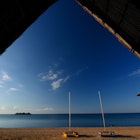
Mar 15, 2023 • 6 min read

Nov 29, 2022 • 6 min read

Feb 15, 2022 • 6 min read

Jan 31, 2022 • 6 min read

Feb 11, 2020 • 5 min read

Dec 10, 2019 • 7 min read
From the moment I crossed the Malawi border I knew … ‘The Warm Heart of Africa’ had claimed another victim, love-struck and powerless to resist the tranquil charms of this most welcoming of countries. Philip Briggs , author of Malawi: the Bradt Guide
Malawi is one of Africa’s most underrated travel destinations. Indeed, many travellers who arrive on the continent barely aware that Malawi exists come to regard it as their favourite African country by the time they return home. Malawi’s inherent likeability has earned it several nicknames – ‘Land of the Lake’, ‘Warm Heart of Africa’, and ‘Africa for Beginners’ – that go a long way to summing up its winning charms. Few countries are so dominated by a single geographical feature. Lake Malawi, enclosed by sheer mountains and edged by a seemingly endless succession of sandy beaches, follows the dramatic contours of the Great Rift Valley for a distance of 585km, accounting for more than 15% of the country’s surface area.
There is much truth in the phrase ‘The Warm Heart of Africa’. Not only do Malawi’s climate and lush vegetation conform effortlessly to every stereotyped image of tropical Africa, but the people exude a laidback warmth that make visitors feel instantly at home. And ‘Africa for Beginners’? Well, certainly, this compact, cheap and hassle-free country would provide a great introduction to Africa, offering a rich variety of attractions suitable to families, honeymooners, wildlife lovers and hard-core backpackers alike. The lake is the indisputable focal point of Malawi’s tourist industry. Backpackers gather in their hundreds at lakeshore villages such as Cape Maclear and Nkhata Bay, while a host of more exclusive retreats cater to higher paying tourists. But there is more to Malawi than a lake, including accessible national parks teeming with wildlife, ancient rock art sites, forests alive with tropical birds, and hiker-friendly mountains such as Nyika and Mulanje.
Food and drink in Malawi
The staple diet in Malawi is nsima , a stiff porridge made from pounded maize meal boiled in water. Few travellers develop a taste for nsima, so it is fortunate that most local restaurants also serve rice and potato chips (or occasionally cassava or sweet potato chips).
At tourist-class hotels and restaurants in the major towns, you can eat food to international standards at a very reasonable price – there are few upmarket restaurants in Malawi where you can’t eat well for under US$10 for a main course (though better restaurants in Lilongwe and Blantyre might be more like US$15). Local restaurants tend to serve a predictable and somewhat dull menu of beef (nyama ngombe), chicken (mkuku) or fish (nsomba) with chips or rice or nsima, but are very reasonably priced at anything from US$2 to US$4 for a starch-heaped plate, often accompanied by a sharp-tasting dollop of stewed cassava or pumpkin leaves (chisisito), or a heap of stewed beans. Popular fish include chambo (a type of tilapia), kampango (a type of catfish) and mpasa (a large cichlid with dark flesh that is often referred to as lake salmon). The most widely available fish in Malawi is usipa, a tiny fish that is generally sun-dried after it is caught.
Restaurants
At tourist-class hotels and restaurants in the major towns, you can eat food to international standards at a very reasonable price – there are few upmarket restaurants in Malawi where you can’t eat well for under US$10 for a main course (though better restaurants in Lilongwe and Blantyre might be more like US$15). Local restaurants tend to serve a predictable and somewhat dull menu of beef ( nyama ngombe ), chicken ( mkuku ) or fish ( nsomba ) with chips or rice or nsima , but are very reasonably priced at anything from US$2 to US$4 for a starch-heaped plate, often accompanied by a sharp-tasting dollop of stewed cassava or pumpkin leaves ( chisisito ), or a heap of stewed beans. Popular fish include chambo (a type of tilapia), kampango (a type of catfish) and mpasa (a large cichlid with dark flesh that is often referred to as lake salmon). The most widely available fish in Malawi is usipa , a tiny fish that is generally sun-dried after it is caught.
Cooking for yourself
If you want to put together your own meal, you’ll find that the variety of foodstuffs available varies from season to season and from town to town, and sudden shortages of commonplace items are to be expected. In most towns, you can buy fresh bread at the Shoprite or other supermarkets, or at a bakery. Supermarkets also normally stock a variety of spreads and packaged food such as yoghurt, potato crisps, biscuits and sometimes cheese and cold meat. Fruits and vegetables are best bought at markets, where they are very cheap, as is fresh meat. Potatoes, onions, tomatoes, bananas, sugarcane and some citrus fruits are available in most markets around the country. In larger towns and in agricultural areas a much wider selection of fruits and vegetables might include avocados, peas and beans, paw-paws, mangoes, coconuts and pineapples. For hikers, packet soups are about the only dehydrated meals available throughout Malawi. Dried staples such as rice, maize meal and pasta can be bought in supermarkets and markets.
Brand-name soft drinks such as Pepsi, Coca-Cola and Fanta are widely available in Malawi and cheap by international standards. If the fizzy stuff doesn’t appeal, you can buy imported South African fruit juices at most large supermarkets. Frozen fruit squashes are sold everywhere in Malawi for a few kwacha; they’re very sweet but otherwise quite refreshing on long walks and bus trips. Tap water is generally safe to drink in towns, providing the chlorine hasn’t run out, but bottled mineral water is available if you prefer not to take the risk.
Traditional African beer is made of fermented maize or millet. It is brewed in villages for private consumption, and also brewed commercially to be sold in litre cartons. The most popular brand of traditional beer is the wonderfully titled Chibuku Shake-Shake (the latter half of the name refers to the need to shake the carton before opening), and special Chibuku bars can be found in most towns and villages. A carton of Chibuku is very cheap and, despite its gruel-like texture, surprisingly rich in nutrients when compared with most alcoholic drinks. Unfortunately, African beer is something of an acquired taste: most travellers can’t stand it.
Wines are widely available in hotels, bars and supermarkets at high import prices. Spirits such as cane, brandy and gin are manufactured locally, while a good variety of imported spirits is available in supermarkets and better bars. The Malawi Gin is well loved, so much so that the manufacturers can’t always keep up with demand, and bars will periodically run short of it. It may not be quite what you’re used to, but is well worth trying, and closing the day at least once with a sunset and an MGT – Malawi Gin & Tonic, that is – is practically mandatory.
Health and safety in Malawi
People new to Africa often worry about tropical diseases, but if you take the appropriate precautions, it is accidents that are more likely to carry you off. Road accidents are very common in many parts of Malawi, so be aware and do what you can to reduce risks: always travel during daylight hours and refuse to be driven by a drunk. Listen to local advice about areas where violent crime is rife, too.
Within Malawi, private clinics, hospitals and pharmacies can be found in most large towns, and doctors generally speak fluent English. Consultation fees and laboratory tests are remarkably inexpensive when compared with most Western countries, so if you do fall sick it would be absurd to let financial considerations dissuade you from seeking medical help.
Preparations
Make sure all your immunisations are up to date. Proof of vaccination against yellow fever is needed for entry into Malawi if you are coming from a yellow fever endemic area. Please discuss with a travel health expert. It is also wise to be up to date on tetanus, polio and diphtheria (now given as an all-in-one vaccine, revaxis, which lasts for ten years), typhoid and hepatitis A. Other vaccines which could be recommended include hepatitis B and rabies.
The biggest health threat is malaria. There is no vaccine against this mosquitoborne disease, but a variety of preventative drugs is available, including mefloquine, malarone and the antibiotic doxycycline. The most suitable choice of drug varies depending on the individual and the country they are visiting, so visit your GP or a travel clinic for medical advice. If you will be spending a long time in Africa, and expect to visit remote areas, be aware that no preventative drug is 100% effective, so carry a cure in case you can’t get to medical help easily. It is also worth noting that no homeopathic prophylactic for malaria exists, nor can any traveller acquire effective resistance to malaria. Those who don’t make use of preventative drugs risk their life in a manner that is both foolish and unnecessary.
It is difficult to strike the right balance when discussing crime in a country such as Malawi. An analytical understanding of how and where you are most likely to become a victim of crime will not only help prevent such an experience, but it will also allow you to relax in situations where it isn’t a serious concern. African cultures are inherently honest, more so perhaps than ours, and to the average Malawian theft is unspeakably wrong, to the extent that petty thieves are regularly killed by mob justice. Because of this, small-town and rural Malawi remains very safe for travel, because Malawians in general wouldn’t think of robbing a tourist, or anybody else for that matter.
On the other hand, crime abounds in the cities, where petty thieves often work the markets and bus stations targeting any likely victim, and tourists are easily identified as such. Even so, there is no significant risk attached to walking around the city centres by day, though the market area of Lilongwe is very dodgy after dark. Elsewhere, don’t tempt fate by wandering alone along unlit streets at night, or going out with more money than you need. If you need to carry your money on your person, use a hidden money-belt. To avoid revealing its location in public, keep whatever spare cash you are likely to need elsewhere. Don’t wear jewellery of financial or sentimental value, and if you can, leave that give-away daypack in your hotel room. Finally, when in doubt, use a taxi – they are very cheap in the cities.
Many travellers routinely carry their money-belt on their person, even walking around a city at night. Anecdotal evidence gathered over years of African travel suggests this is not a good idea, as muggings, snatchings and pickpocketings are far more common occurrences than a locked room being broken into. Obviously, an element of judgement comes into this: if a room feels insecure or a hotel has a bad reputation, don’t leave anything of importance in it. And when you do leave stuff in a room, check that the windows are sealed and the door is properly locked. One factor to be considered is that some travellers’ cheque companies will not refund cheques stolen from a room.
In Malawi, crime against tourists occurs mostly in a few particular ‘trouble spots’ in the cities and along the lakeshore. The pattern appears to be a sudden outbreak of mugging and snatch thefts in one particular resort, followed by a quiet period, indicating that these robberies are largely the work of one particular gang which is eventually arrested or moves on. Lilongwe, Blantyre, Nkhata Bay, Cape Maclear and Salima have all experienced problems of this sort in the past, so your best course of action is to be cautious when you first arrive at one of these places, and to ask local advice once you are settled in. Camping wild on parts of the lakeshore is no longer advisable anywhere in Malawi, and we’ve heard of several instances of tents being broken into at ‘proper’ campsites.
Be cautious of people who befriend you on buses and offer you food or drink, because it appears that the practice of doping travellers in this manner has spread into Malawi. It’s worth noting that con tricks are most likely to be perpetrated by a smartly dressed, smooth-talking guy who can easily build up a rapport with a traveller.
For all the above, Malawi remains a remarkably friendly and honest country. What most often gets travellers into trouble is one moment of recklessness – walking around Nkhata Bay at night with a money-belt on, wandering around Lilongwe market with a daypack dangling off your shoulder, dithering in a city bus station with a map in your hand and puzzled expression on your face, arriving in a city at night and not using a taxi to get to a hotel. Focus your energy on recognising high-risk situations, and do all you can to avoid them. The rest of the time, so long as you conduct yourself sensibly, you have little to fear in terms of crime!
Female travellers
Sub-equatorial Africa is probably one of the safest places in the world for women to travel solo, and Malawi poses few risks specific to female travellers who apply the same common sense they would at home. Unwanted flirtation and the odd direct sexual proposition are a possibility, especially if you mingle with Malawians in bars, but a firm ‘no’ should defuse any potentially unpleasant situation. Men in Malawi probably constitute less of a sexual hassle than men in many Western countries, and for that matter than other male travellers.
Most Malawians have better things to worry about than how female tourists choose to dress, especially in established resort areas. That said, it would be insensitive to wear shorts or a revealing top in areas with a strong Islamic presence, or in villages where tourists are still relatively unusual. Unlike during the Banda era, however, it is no longer illegal or even unusual for women to wear trousers as opposed to a skirt.
Any female (or, for that matter, male) readers concerned about travelling alone in Malawi, but unable to find a travel companion, might be reassured by the thought that there are plenty of places in Malawi where it will be easy to meet with kindred spirits, and there’s a lot to be said for hooking up with people along the way – better, by far, than making an advance commitment to travelling with somebody who you don’t know well enough to be sure they’ll be a suitable travel companion.
Travel and visas in Malawi
A valid passport is required, with an expiry date at least six months after you intend to depart Malawi. Visas are required for travellers from any country that requires Malawians to obtain a visa, including: the USA, UK and most, but not all, Commonwealth and EU passports (a full list is available at www.immigration.gov.mw ). Visas can be obtained on arrival with the exception of the countries listed on the website. Visa fees on arrival are as follows: US$50 transit visa for seven days; US$75 single entry valid for 30 days, but extendable to 3 months (visit local immigration offices after 28 days to extend the visa for a fee of US$7 per additional month); US$150 multiple entry visa for six months; US$250 multiple entry visa for 12 months.
To avoid any mishaps, it’s best to confirm these with the embassy before you embark. For a list of all Malawian embassies and consulates, a useful webiste is www.embassypages.com/malawi .
Arriving overland in your own vehicle, you need to show registration documents at the border, and must buy a Temporary Import Permit (TIP) and insurance for one month (neither is very expensive). If the vehicle isn’t registered in your name, you also need an official letter giving you permission to cross borders with it.
Getting there and away
There are no direct flights to Malawi from outside Africa, but connecting inter-African flights are operated by Ethiopian Airlines , Malawian Airlines , Kenya Airways and South African Airways . Most international flights land at Kamuzu International Airport, 26km from Lilongwe, but Ethiopian Airlines and South African Airways both run services several times weekly to Chileka Airport, 16km north of Blantyre. International and domestic airport taxes are included in the ticket price. Good deals are often available through individual carrier websites, but flight specialists still have a part to play. Getting the lowest price will require several calls and may result in some rather complicated routing.
Malawi is a popular fixture on the overland and backpackers’ trail between eastern and southern Africa, and as many tourists arrive in Malawi overland as by air. Many such people travel independently, but an increasingly popular choice for first-time visitors is an overland truck trip, which allows you to compress several countries into a limited period. Some of the overland companies include Absolute Africa , African Overland , African Trails , Dragoman , Drifters and Nomad Africa Adventure Tours .
To compare itineraries see the Malawi holidays on SafariBookings .
G etting around
Internal flights.
Malawian Airlines is the end result of the liquidation of Air Malawi and the subsequent partnership with Ethiopian Airlines in 2013. Their routes include domestic flights between Lilongwe and Blantyre. A more versatile option is Ulendo Airlink , which offers daily services to Likoma Island, Chelinda (Nyika National Park), and Mfuwe (Zambia). Private charters are also available from Ulendo. There is a US$7 departure tax on all domestic flights, payable in cash at the airport.
Malawi is fairly easy to drive around. The speed limit for main roads is 80km/h and in towns drops down to 50km/h. Although the change is not always signposted, it’s best to slow down in towns and wait to regain speed until well after an inhabited area to avoid speed traps set up by the police. As in most former British colonies, and all neighbouring countries, driving is on the left side of the road, requiring an additional adjustment for visitors from North America and mainland Europe. Petrol is blended with ethanol and has a low octane rating, and diesel is now higher in price than petrol.The crippling fuel shortages that have struck Malawi in the past have thankfully gone, but smaller-scale shortages still occur, so it’s wise to always fuel up when you have the chance.
Many car-hire companies operate out of Blantyre and Lilongwe. If you decide to rent a vehicle, take a good look under the bonnet before you drive off, and check the state of all tyres including the spare. You should also be provided with two reflective triangles and a fire extinguisher, as you are legally required to carry these and police may ask for them at checkpoints. One reader has recommended you bring an aerosol puncture-repair kit with you, for added security should you have to drive on your spare tyre on a poor road.
If arriving with your own vehicle, you’ve probably made sure it’s tough and well kitted out, as driving to Malawi is worse than driving around Malawi. You don’t need a 4×4, especially in the dry season, but a robust vehicle with high ground clearance is best.
The state of the roads in 2018 was generally good, with good newer tar on many of the main arteries. The worst trunk road in the country is probably the stretch of M5 between Salima and Nkhata Bay. The hairpin bends on the way up to Livingstonia will challenge most vehicles, but the once-challenging Rumphi S103 back road to Livingstonia was being tarred at the time of writing although access is still possible.
Remember though that roads can deteriorate fast – good tarred roads develop horrendous pot-holes with no maintenance and dirt roads become impassable if not graded regularly. Rain washes roads and bridges away, causing delays and worry even if recent repairs and emergency bridges have not taken too long to complete (only days or weeks, not months or years as in the past). This is Africa, not Europe or the States, and it’s what you came for. So take care and, if in doubt, ask local advice.
From its foundation in 1947 to its collapse precisely 60 years later, the parastatal Shire Bus Lines was the dominant public transport provider in Malawi. Fortunately, a private company called Axa, founded in 2006 with just three coaches to its name, has stepped into the breach, providing superior coach and bus connections to most corners of the country with a fleet of 40 modern vehicles. A new kid on the block is the excellent and fractionally cheaper SoSoSo , which sometimes has more sociable departure times, and which plays more modern music videos than Axa’s wall-to-wall gospel wailing. Both companies provide a snack, and both will have the music cranked to the max, so you may want to bring earplugs.
When to visit Malawi
Malawi can be visited throughout the year, but for those with flexible schedules, a few seasonal factors merit consideration. Climatically, the most pleasant time to travel is during the southern hemisphere winter, from May to October, which is characterised by warm to hot days and temperate to cool nights, depending greatly on altitude (October is very hot in most of Malawi, but it’s the optimum time to visit the Nyika, as the wild flowers flourish then). Winter is also the dry season, so rain is unlikely to cause road damage or otherwise disrupt your travel plans, the risk of contracting malaria is greatly reduced, and game viewing is at its best as the vegetation dies back, increasing visibility, and animals congregate on perennial water sources.
An advantage of travelling during the summer months of November to April is that rain transforms the parched winter landscape to a lush paradise alive with green foliage, colourful wild flowers and a wealth of fresh fruits and vegetables. Climatically, while the lakeshore can be oppressively hot and humid in summer, the higher-lying areas are balmier, remaining warm at night. A special-interest group for whom summer is the optimum time to be in Malawi is birdwatchers: between November and April, resident species are boosted by a variety of Palaearctic and intra-African migrants, and many species shed their dowdy winter plumage for brighter breeding colours.
The overall climate can be characterised as tropical, with hot days and balmy nights. However, local temperature variations are influenced greatly by altitude and season. The hottest parts of the country are the Lake Malawi hinterland and the Shire Valley, which lie below 500m. Highland regions such as Mulanje, Zomba, Nyika, Dedza and Viphya are more temperate, and they can be very chilly at night during winter.
There are three seasons. The months between November and March are hot and wet, those between April and August are moderate and dry, while September and October are hot and dry. July and August can be very cold at night. Despite the large amount of surface water in Malawi, much of the country is prone to drought; the absence of any irrigation schemes means that local famines are a serious threat in years of low rainfall.
What to see and do in Malawi
Mount mulanje.
Mulanje is a spectacular 650km² granite inselberg that rises in dramatic isolation above the Phalombe Plains southeast of Blantyre. The massif consists of a plateau of rolling grassland set at an average elevation of 2,000m, but this is incised by several thickly wooded ravines, and studded with 20 peaks of 2,500m or higher, including Sapitwa, the highest point in central Africa at 3,002m. By contrast, the plains below Mulanje have a mean altitude of 650m, though the northern slopes are linked to the discrete 2,289m Mount Mchese by the Fort Lister Gap, a mid-altitude saddle with an average elevation of around 950m. Both Mulanje and Mchese are protected within the Mount Mulanje Forest Reserve, which was proclaimed in 1927 and is managed by the Mount Mulanje Conservation Trust (MMCT).
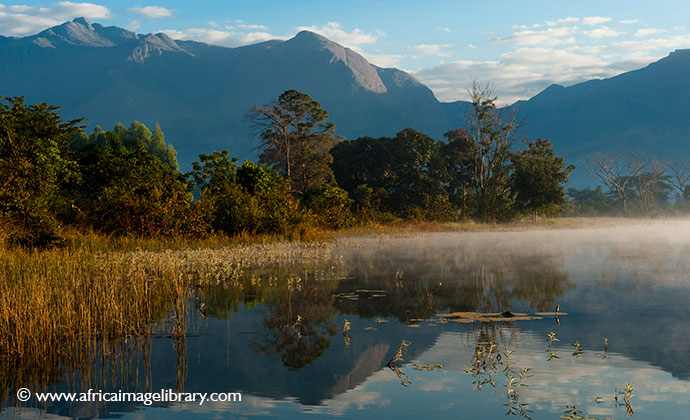
Less than an hour’s drive from Blantyre, Mulanje has long been the country’s premier hiking and rock-climbing destination, popular with residents and tourists alike for its dramatic scenery and well-organised and inexpensive facilities. Indeed, Mulanje is the main focal point of the Mountain Club of Malawi (MCM), which was founded as the Mlanje Mountain Club in 1952 and adopted its present name in 1980. There are innumerable hiking routes from the base to the plateau, the most popular being the Skyline Path to the Chambe Basin and the Lichenya Path to the Lichenya Plateau, both of which start at Likhubula Forestry Station some 8km from Mulanje Town. On the plateau itself there are ten mountain huts, one owned by the CCAP, and the remainder maintained by the MMCT and MCM in collaboration with the Forestry Department. These huts are connected to each other by trails ranging from 3 to 6 hours’ walking duration, and the peaks and valleys of Mulanje offer enough walking and climbing possibilities to keep anybody busy for at least a month. In addition, many of the streams on Mulanje are stocked with trout, and fishing permits are issued by the forestry office at Likhubula.
Long one of the best-kept secrets on the African backpackers’ trail, Nkhata Bay has steadily grown in reputation over the past two decades to eclipse Cape Maclear as the most popular traveller congregation point on Lake Malawi, if not anywhere between Zanzibar and Victoria Falls. It’s not difficult to see why. Nkhata Bay has a gloriously lush and scenic setting, comprising a twin pair of bays enclosed by forested hills and separated by a long, narrow peninsula. And the small town itself, nestled between the hills and lakeshore, is as charming as it is uncategorisable – call it an overgrown Tonga fishing village, a venerable district capital, a bustling market port or an idiosyncratically laidback lakeside resort, one senses that few of its estimated 15,000 residents would be sure which of these labels wears best.
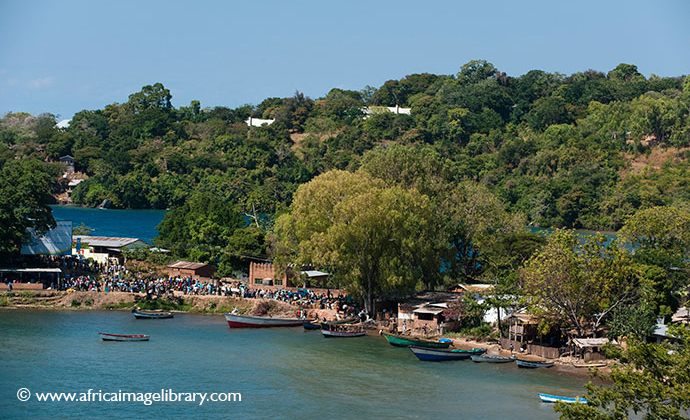
A big part of Nkhata Bay’s appeal is the rare sense of traveller community that embraces the town and string of popular lodges running out towards Chikale Beach. The place is also addictively laid-back, so much so that it habitually paralyses the will of travellers, and infuses their best-laid plans with an element of suppliant inertia. And while most visitors associate Nkhata Bay with lazy days and party nights, the town offers plenty of interest to more active travellers, including kayaking, snorkelling, forest walks, fish-eagle feeding, beach volleyball or simply joining in a local football match. Worthy of a special mention are the day/night dives and diving courses offered by Aqua Africa in a unique environment described by one experienced diver as ‘fresh water with sea equivalents’.
Nyika Plateau
At the heart of the Nyika National Park, averaging over 2,000m in altitude, lies the gently undulating Nyika Plateau, where montane grassland and fern heather communities, notable for their prolific wild flowers during the rainy season, are interspersed with isolated stands of indigenous forest and exotic pine and eucalyptus plantations. Although the Nyika Plateau is very much the centrepiece of the park and the only part that is readily accessible to tourists, the Brachystegia-covered lower slopes of the Nyika range also lie within its boundaries.
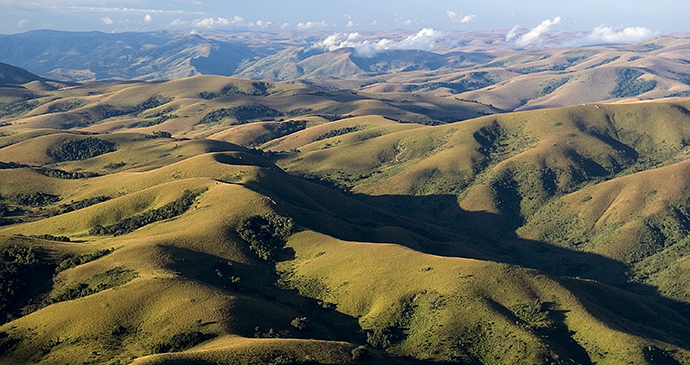
The plateau is one of the coldest parts of Malawi, moderate in summer but subject to fierce winds and with sub-zero temperatures often recorded on winter nights. October is an ideal time to visit: it’s less cold and the rains haven’t yet arrived, and wild flowers spring up all over.
Zomba Plateau
Rising to the immediate northeast of the eponymous town, the Zomba Plateau is an isolated syenite protrusion that extends over around 130km² and reaches an altitude of 2,087m at Malumbe Peak in the southwest. The plateau’s northwest rim forms the southern escarpment of the Upper Shire Valley, and is characterised by sheer drops of up to 1,200m, offering spectacular views over the plains below. Much of the plateau is protected in Malawi’s oldest forest reserve (gazetted in 1913), and while much of the indigenous vegetation has made way for pine plantations, it also supports significant patches of indigenous riverine and montane forest, as well as areas of tangled scrub and Brachystegia woodland. A large dam was constructed in 1999 in the bowl of the mountain, but this does little to interrupt the natural feel.
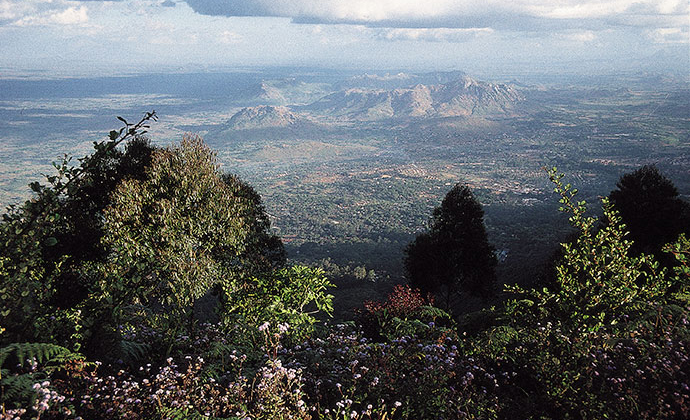
Though it is less spectacular and wild than the larger Mulanje and Nyika plateaux, the upper reaches of Zomba are considerably more accessible, and a vast network of footpaths makes it one of the most popular areas in Malawi for rambling and hiking. For most visitors, Zomba’s scenery is undoubtedly its main attraction, but the mountain also supports a rich birdlife, while mammal species present include elusive populations of leopard, serval cat and mongooses. Antelope present on the mountain include bushbuck, klipspringer and red duiker, vervet monkey and yellow baboon are reasonably common, and the lovely samango monkey is seen in indigenous forests, particularly around Chingwe’s Hole and Zomba Forest Lodge.
Cape Maclear
Situated in a 6km² enclave of unprotected land within Lake Malawi National Park, the second-largest settlement on the Nankumba Peninsula is the fishing village known to locals as Chembe but to most outsiders as Cape Maclear. It’s a beautiful spot, enclosed by tall forested mountains and lush rocky islands, and one that has long enchanted overseas visitors.
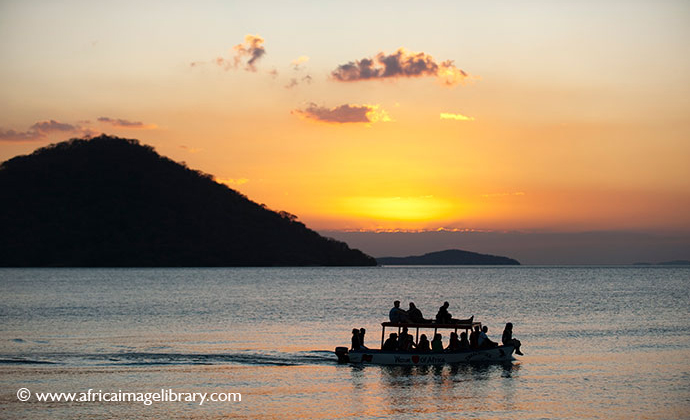
In addition to having the broadest range of accommodation options anywhere on the lake, Cape Maclear offers a peerless range of aquatic activities, from snorkelling and diving to kayaking and motorised lake excursions. The notoriously assertive beach-boy and tout culture that once characterised the village has been diffused, thanks to the adoption of a rota system that assigns a specific guide to a specific lodge for a specific period. And yet there remains a gratifyingly integrated feeling to tourist development in Chembe, with most lodges lying right in the heart of the village, so that visitors are exposed to everyday African life in an unforced manner very different from any other lakeside resort in Malawi. There’s a strong strand of community tourism here, with a range of projects that directly benefit Chembe people: from local tours, jewellery- and papermaking workshops, drumming lessons and more.
Adding to these charms, Chembe is one of the few accessible parts of the Malawian lakeshore to face northwest, which not only ensures some protection from the fierce winds that sometimes rise on the lake, but also means it is perfectly positioned for spectacular sunsets.
Chongoni Rock Art Area
Stretching northwest of Dedza for about 25km, the Chongoni Rock Art Area is one of Malawi’s most neglected national treasures, containing 127 rock faces and shelters that represent an ancient painting tradition dating back at least 2,000 years. Despite being inscribed as the country’s second UNESCO World Heritage Site (the other being Lake Malawi National Park) in 2006, the area has seen little formal tourist development. Despite this lack of development, several panels can still be visited with reasonable ease by interested travellers, most notably those at Chencherere, Namzeze and Mphunzi. At the core of the 126km² UNESCO-inscribed rock-art area, the Chongoni Forest Reserve lies immediately east of the M1 north of Dedza, and is also the site of the Chongoni Forestry College and associated Kazela Forestry Resthouse. Two-thirds of the painted panels lie within the forest reserve, including Chencherere and Namzeze, but the rock-art area also extends southwest from the M1 as far as Mphunzi Mountain, where a cluster of eight panels forms the most worthwhile goal in the area for those with time to visit one site only.
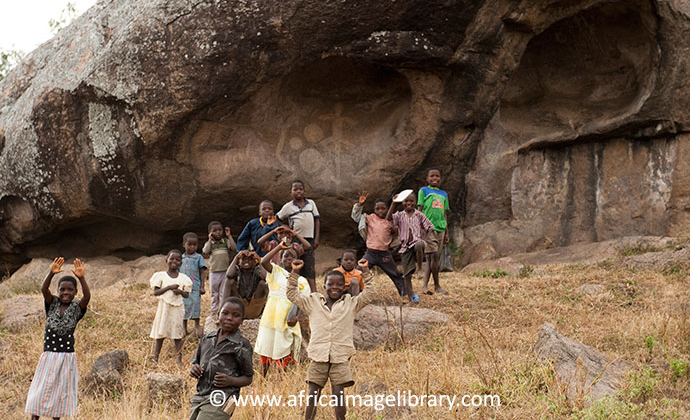
Rock paintings aside, this is a very scenic part of Malawi, studded with dozens of massive granite inselbergs (outcrops), and ideal for casual rambling, whether you’re based in Dedza Town or the resthouse at Chongoni Forestry College. The forest reserve supports a mixture of plantation forest and Brachystegia woodland, as well as small patches of evergreen forest on some of the hills. Baboon, vervet monkey, rock hyrax, grey duiker and klipspringer are quite common in the area, leopard and samango monkey are present in the evergreen forest, and the varied avifauna includes a similar range of Brachystegia-associated species as Dzalanyama, as well as a limited selection of forest species.
Surrounded by orderly tea plantations and immense granite protrusions, the breezy market town of Gurué sits at an altitude of 720m in the fertile green foothills of the southern Rift Valley. It is the eleventh-largest town in Mozambique, with a population estimated at 145,000, a comparatively moist and cool climate, and an energised, bustling mood absent from many of its more torpid coastal cousins.
Gurué’s relatively temperate climate is a refreshing change from the coastal heat, and the immediate environs offer some good opportunities for relaxed rambling in scenic surrounds (recalling the Mulanje and Thyolo districts of neighbouring Malawi), but the major attraction here is Mount Namuli, one of Mozambique’s premier hiking and birding destinations.
The town itself is of limited architectural interest, mostly dating to the post-World War II era, but there is a rather pretty small chapel, with some colourful murals inside, at the northeast end of Avenida República.
Mount Namuli
Mozambique’s second-highest peak at 2,419m, Namuli is a massive granite dome that protrudes a full kilometre above a grassy rolling plateau incised with numerous streams and gorges. The main peak of Namuli lies only 12km northeast of Gurué, but is not visible from the town itself. Several other tall domes stand on the same plateau, and the entire massif comprises almost 200km² of land above the 1,200m contour.
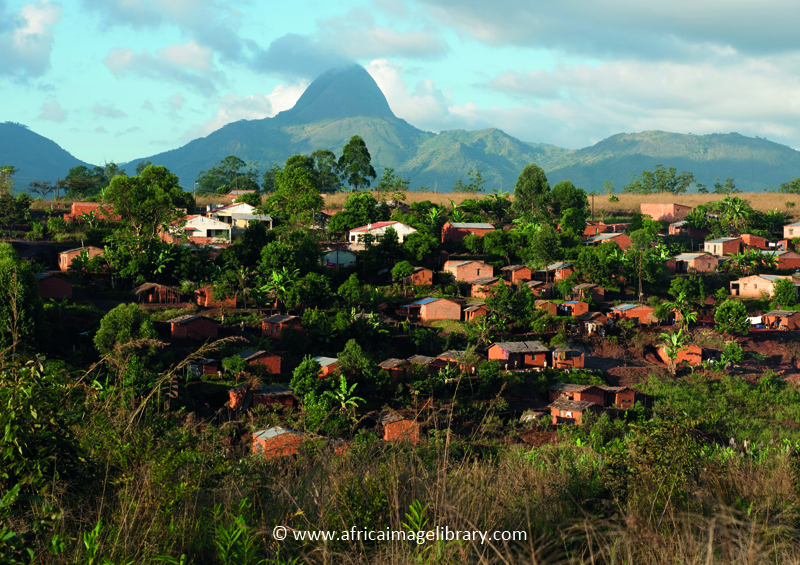
Popular with hikers for its lovely green upland scenery, Namuli is also a mountain of great biological significance, supporting a variety of montane habitats including some 12km² of moist evergreen forest that shows some affiliations to the Eastern Arc Mountains of Tanzania. Two main patches of forest remain: the larger but relatively inaccessible Manho Forest, which borders the Muretha Plateau about halfway between Gurué and Namuli Peak, and the more accessible Ukalini Forest at the southwest base of the granite cliffs below Namuli Peak.
Vincent’s bush squirrel, listed as Critically Endangered by the IUCN, is endemic to these forests, which also support samango and vervet monkey, red and blue duiker, various small carnivores and at least one endemic but as yet undescribed species of pygmy chameleon.
Cascata de Namuli
The best known of several spectacular waterfalls on the western side of the massif, the Cascata de Namuli is formed by the Licungo River as it cascades about 100m down a sloping rock face north of Gurué. It is an excellent goal for a day walk, a 5–6-hour round hike out of Gurué that passes through a variety of habitats, including the tea plantations of the Chá Zambezi Estate, stands of bamboo and small patches of indigenous forest, and you can swim in a pool above the waterfall. The riverine forest above the waterfall reputedly shelters the Namuli apalis and other rare birds, but it is unclear whether these range as far down as the waterfall itself.
Casa dos Noivos
Situated in the hilly countryside north of Gurué, the Casa dos Noivos is an abandoned hilltop dwelling that must have been very beautiful in its prime, and that still offers one of the most spectacular views in the region, over a rolling series of verdant valleys below Mount Namuli. The origin of its name (literally ‘House of the Bride and Groom’) is unclear: it may be that the house was built for a newlywed couple or simply that it is known locally as a place for romantic assignations.
Lake Tanganyika
Lake Tanganyika is one of a series of geologically old lakes that have filled areas of the main East African Rift Valley. Look at a map of Africa and you will see many of these in a ‘string’ down the continent: lakes Malawi, Tanganyika, Kivu, Edward and Albert are some of the larger ones. Zambia just has a small tip of Tanganyika within its borders, but it is of importance to the country. Access to Lake Tanganyika grants Zambia a real port with transport links to a whole side of Tanzania and (during peaceable times) direct access to Burundi. It also makes this one corner of Zambia totally different from the rest of the country, with a mix of peoples and a ‘tropical central Africa’ feel. There are some well-established lakeside lodges, those to the east within striking distance of Kalambo Falls, and two in the vicinity of the little-known but viable Nsumbu National Park.
Likoma Island
The island of Likoma, 8km long and 3km wide, lies within Mozambican waters but is territorially part of Malawi, mainly as a result of its long association with Scottish missionaries. Today, the island’s main attraction for travellers is its isolation from the mainland and mellow atmosphere. This is no conventional tropical-island paradise, though the beaches really are splendid with the mountainous Mozambican shore rising above them, while the interior has a certain austere charm, particularly the southern plains which are covered in massive baobabs, shady mango trees and studded with impressive granite outcrops.
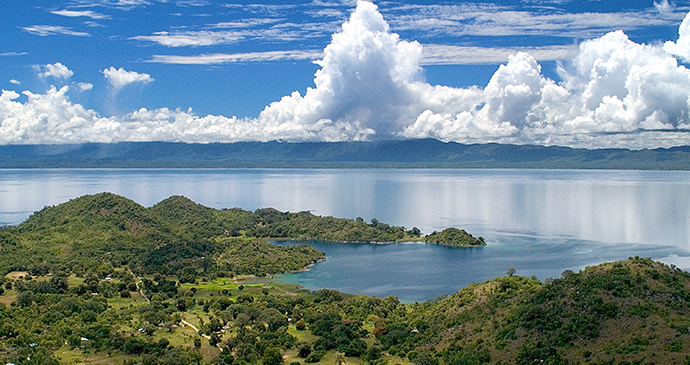
Likoma has always generated a great deal of interest among travellers, but it remains surprisingly little visited. Above all, perhaps, Likoma has an overwhelmingly friendly mood, making it a good place to get to know ordinary Malawians.
Lilongwe is not the most imposing of African cities. More than four decades after being proclaimed capital of Malawi, it still comes across as something of a work in progress: a scattered and incohesive patchwork of commercial hubs, administrative and ambassadorial zones, leafy upmarket residential suburbs and village-like suburban shanty towns that sprawl unconvincingly between grassy fields and large tracts of indigenous woodland and plantations.
The city has two main focal points, Old Town and Capital City, both very different in character, but neither exactly over-endowed with personality. Most travellers end up in Old Town, which is the main centre of commerce, boasting an energetic market and bus station, a sprinkling of shiny new malls and all manner of slightly anachronistic Indian retail stores. The Old Town has witnessed rapid expansion in recent years, yet it still has the feel of a southern African everytown, similar in mood and appearance to any number of medium-sized regional urban centres south of the Zambezi. And it’s about the only area you can tackle on foot.
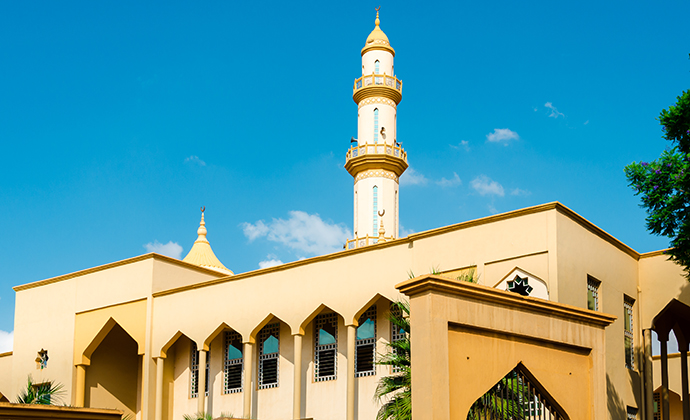
Capital City, by contrast, is a true original. Custom-built during the Banda era, it still feels tangibly contrived, an open-air huddle of semi-skyscraping office blocks, freshly painted banking houses, leaf-shrouded embassies, warehouse-like supermarkets and half-full car parks whose distinguishing feature is a kind of collective capacity to cancel each other out. From whatever angle you approach Capital City, and no matter how often, it is difficult to shake off the feeling that it ended before it began and you somehow blinked at the wrong moment!
So it’s not Dakar or Timbuktu, but Lilongwe could scarcely be a more equable or manageable introduction to urban Africa. The climate is comfortable, getting in and out of town is simplicity itself, accommodation is abundant and conveniently situated, and shops and markets are well stocked. In some ways, Lilongwe feels like a microcosm of the country it governs – small but deceptively densely populated, friendly and personal, dusty and colourfully chaotic, and full of contrasts. Behind the houses and offices, within eyeshot of parliament, people still grow maize in their gardens. Villagers cycle miles from outlying areas to sell produce at the country’s largest market, weaving between the buses that form jerking, hooting, belching queues in the Old Town centre. And as night falls, the familiar urban rumble is punctuated by sounds eerily evocative of Lilongwe’s African setting – the wild whooping of spotted hyenas and chilling cries of bushbabies, both of which haunt the nature sanctuary bisected by the main trunk road between Old Town and Capital City.
Livingstonia
Perched on the Rift Valley Escarpment above Lake Malawi, the town of Livingstonia, founded by Scottish missionaries in the late 19th century, is one of the most scenic places in all of central Africa. The vertiginous views from the edge of this historic town – plummeting down the escarpment and across the lake to the Livingstone Mountains in Tanzania – are quite breathtaking. Indeed, on a clear day, and with sufficient imagination, the horizon is so distant that you’ll swear you can see the curvature of the Earth.
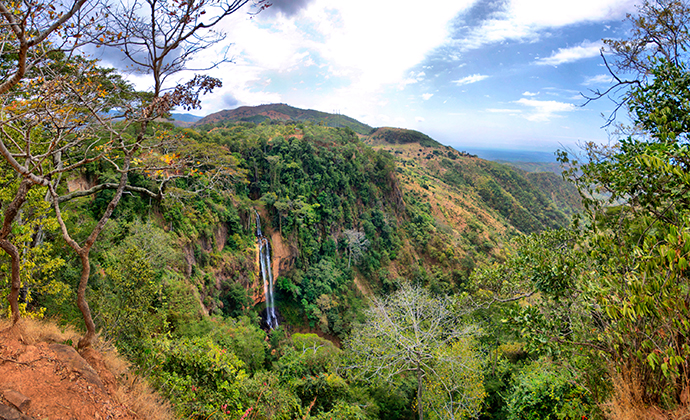
Arguably the most intriguing settlement anywhere in Malawi, and certainly the most unusual, Livingstonia is a curiously unfocused place. Dotted along the escarpment, there is a resthouse, school, technical college and hospital, all dating to the turn of the 20th century. Elsewhere, separated by scattered patches of plantation forest and indigenous woodland, is a low-key market enclosed by a few poorly stocked grocery shops, the vast mission church, and a cache of venerable administrative buildings and a clock tower overlooking a bizarrely redundant stone traffic circle surrounded by blooming flower beds. The overall impression is as if somebody started transporting a small Victorian village to the edge of the Rift Valley Escarpment, but got bored before they finished the job.
The combined scenic and historical interest of Livingstonia makes it one of the most popular non-lakeside tourist destinations anywhere in Malawi. True, it’s not that easy to reach on public transport, but for many the uphill hike from Chitimba is an attraction in itself. And once you’ve ascended the escarpment, there’s the choice of several very different but equally likeable places to stay, while amusements include a tour of the village and its museum, the walk to the spectacular Manchewe Falls, and the wide range of hikes that are possible around the escarpment.
Liwonde National Park
Dominated by the sluggish Shire River and its lush fringing vegetation, Liwonde National Park evokes every romantic notion of untrammelled Africa, especially at night, when the air resonates with the uninhibited chirruping of frogs and grunting of hippos. And while this 548km² reserve has to rank as a second-string safari destination compared with the continent’s finest, it does offer perhaps the best wildlife viewing and birdwatching in Malawi, and its aesthetic merits – this is the quintessential African river scene – elevate it close to being one of Africa’s truly great game reserves.
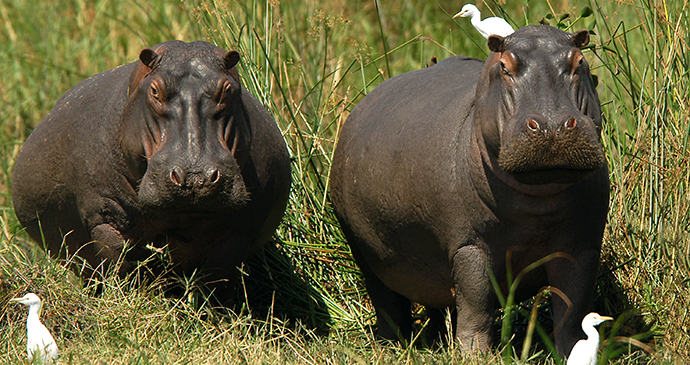
Liwonde is a relatively small park, only 50km long and nowhere more than 15km wide, and an estimated 100,000 people live within 5km of its boundaries, where they attempt to scrape a living in what is technically a marginal agricultural area. As a result, there has been a long history of conflict between wildlife and local villagers, and poaching is an ongoing problem, one that resulted in the local extinction of several large mammal species, including lion and African wild dog, though following the park’s fencing in 2017 lion – and cheetah – have been reintroduced. There is a wealth of wildlife to be seen in Liwonde, and sightings here feel very genuine, wild and pristine.
Majete Wildlife Reserve
Gazetted in 1955 and neglected by almost everybody except poachers for its first half-century of existence, Majete Wildlife Reserve is in the midst of a dramatic and encouraging resurgence. With the reintroduction of lions (rounding out the ‘Big Five’) in 2012, Majete has arguably distinguished itself as Malawi’s premier game-viewing destination. The catalyst for this reversal of fortunes is the private African Parks organisation, which entered into a 25-year management contract with the government in March 2003, with the twin aims of resuscitating the reserve as a conservation area and as a source of sustainable income for surrounding communities. African Parks has since reintroduced more than 3,000 head of game into the reserve, erected fences, improved the road infrastructure, constructed an excellent community-owned tented camp, cultural centre and campsite, initiated a varied programme of tourist activities, and granted the highly regarded Robin Pope Safaris a private concession for their stunning new five-star luxury lodge, Mkulumadzi.
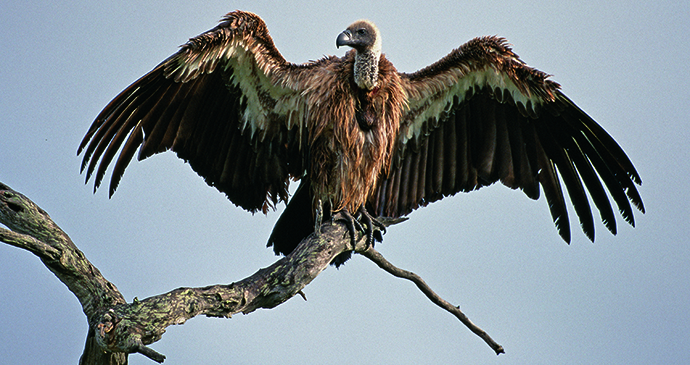
Only a few years ago, it would have been misleading to compare Majete to Liwonde National Park, further north along the Shire River, but the recent improvement in game viewing, infrastructure and accommodation has placed Majete in direct competition with Liwonde for the honour of being Malawi’s premier park. This ongoing development is massively encouraging, and Majete now boasts the greatest antelope diversity in the country, offering a good chance of seeing half a dozen species in the course of a day, including the majestic greater kudu, handsome sable antelope and localised Lichtenstein’s hartebeest.

Related books
For more information, see our guide to Malawi :
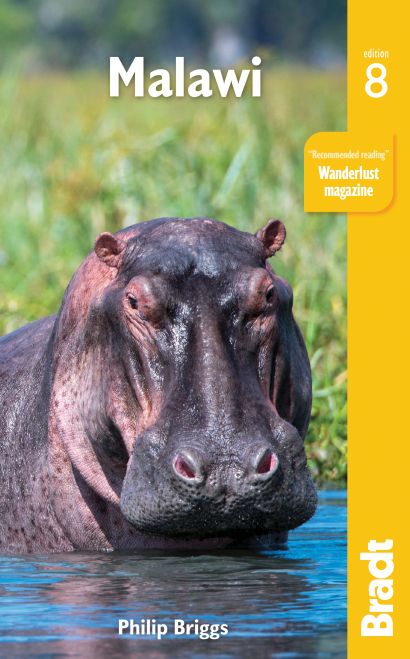
Related articles
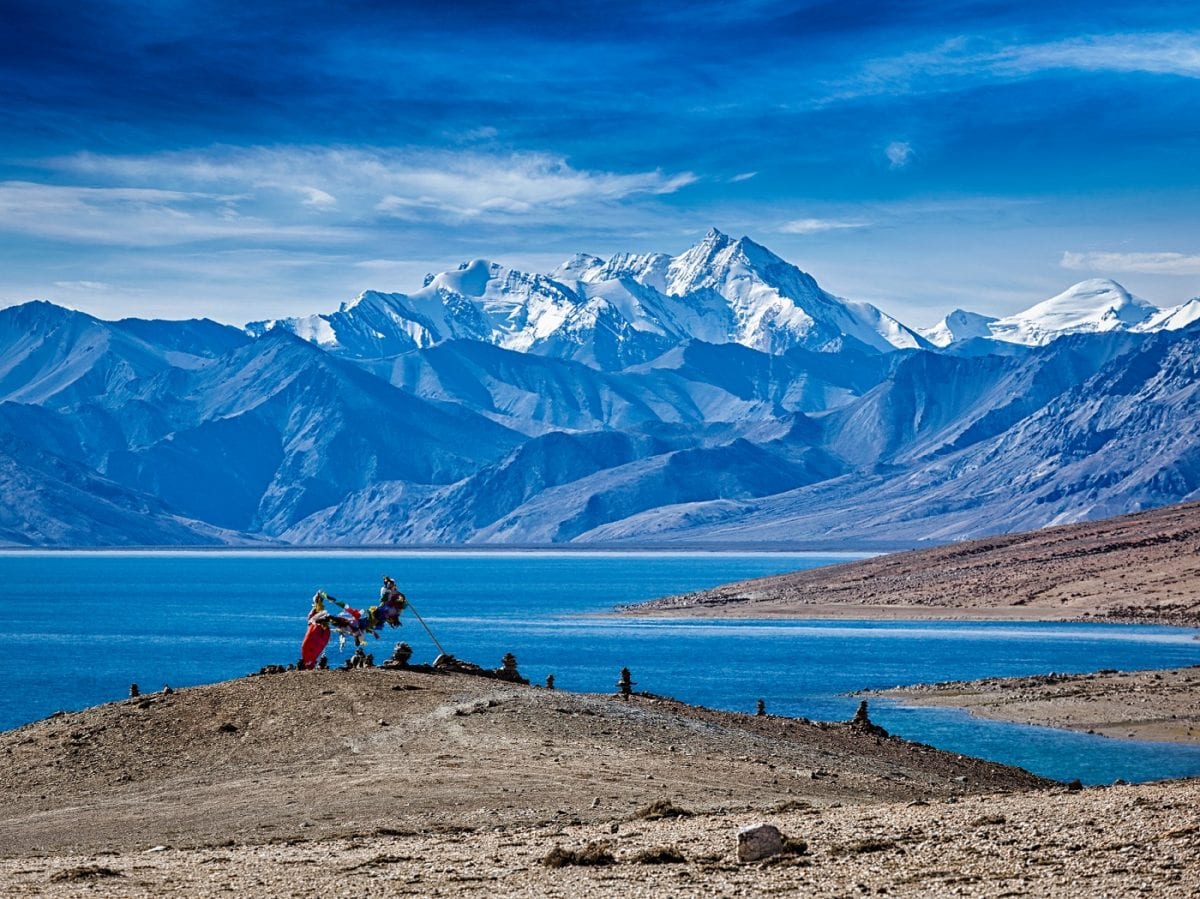
The most impressive lakes in the world
From boiling lakes to vast alpine bodies of water, these are our favourite lakes from around the world.
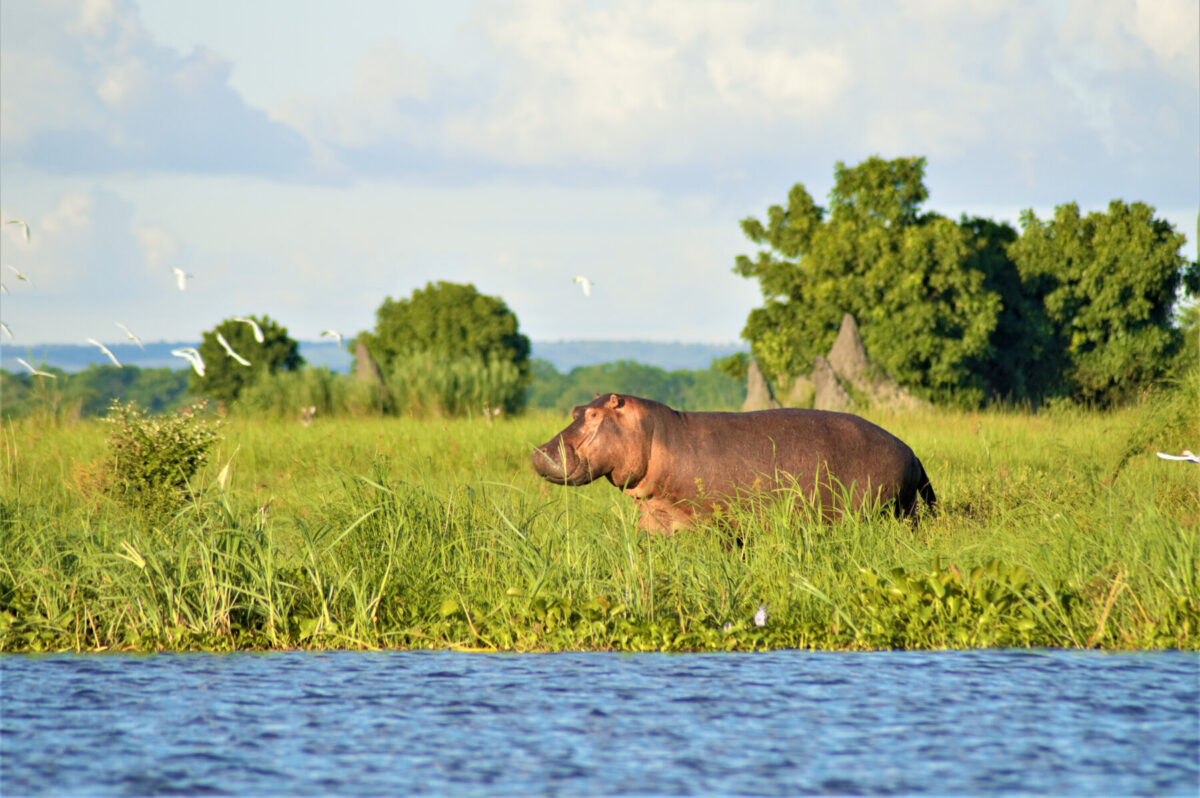
Malawi: the ultimate wildlife guide
Catch a glimpse of southern Africa’s iconic animals with this selection of reserves and national parks.
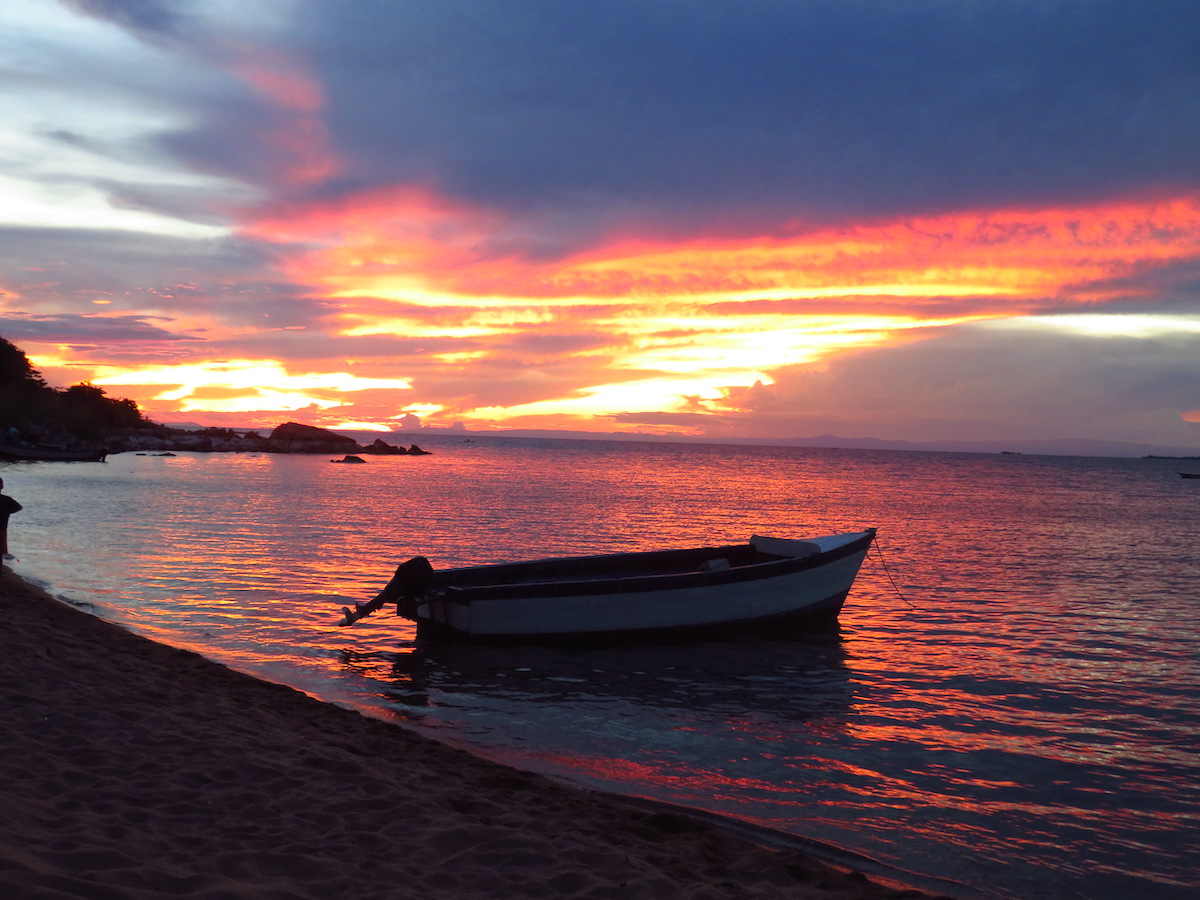
Deserting paradise: the effect of Covid on tourism in Malawi
To Westerners, it may seem as if life in Malawi hasn’t changed much during the pandemic.
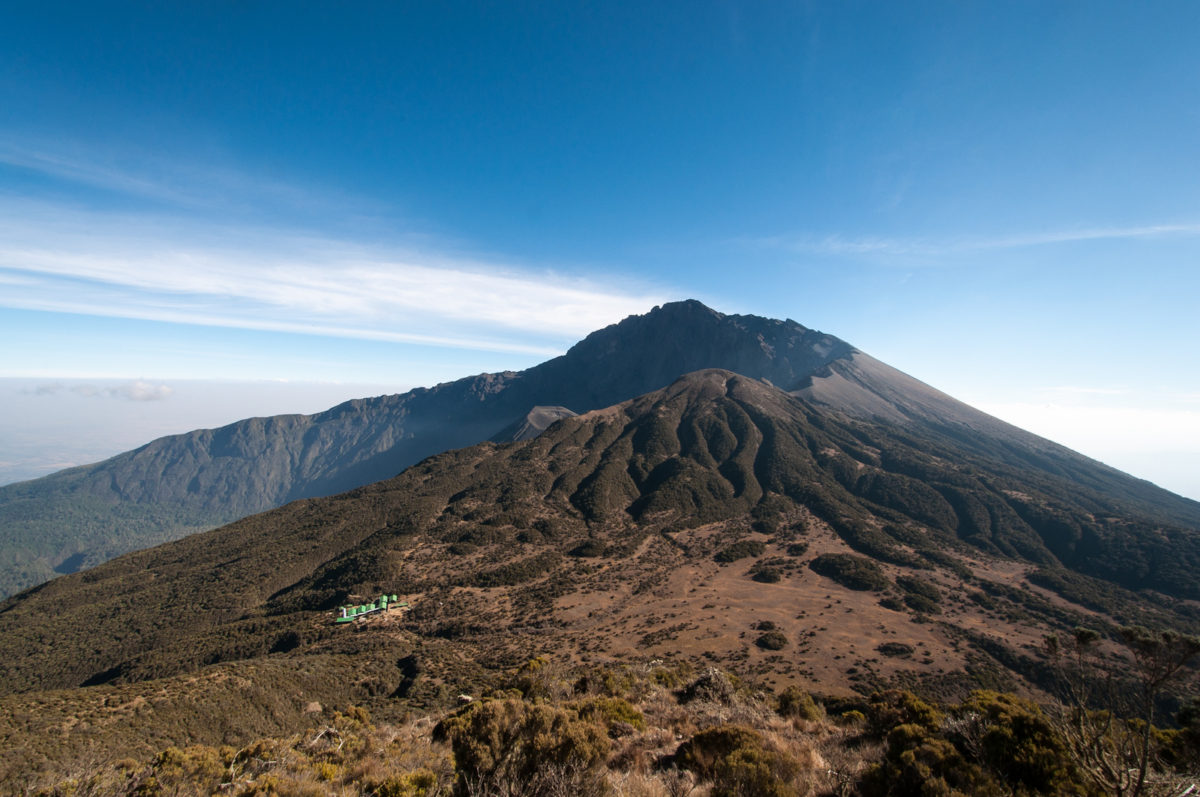
One step beyond: the world’s most impressive lesser-known mountains
How many of these have you climbed?
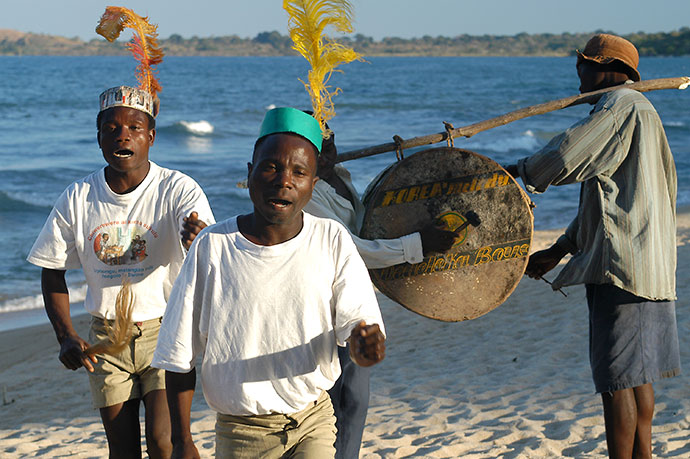
Malawi’s music
Author Helena Smith discusses the range of music styles you can expect to hear on a trip to Malawi.
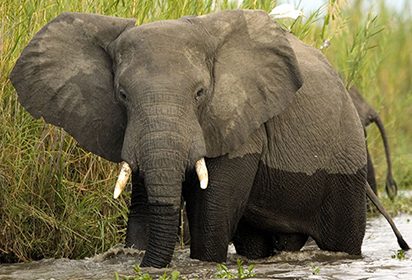
500 elephants on the move
One of the largest and most significant elephant translocations in human history has taken place in Malawi
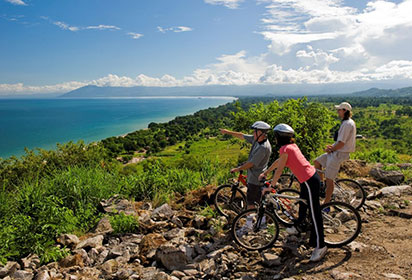
The best activities Malawi
There are plenty of opportunities to get active in Malawi – from watersports on the lake to horseriding, hiking and more.
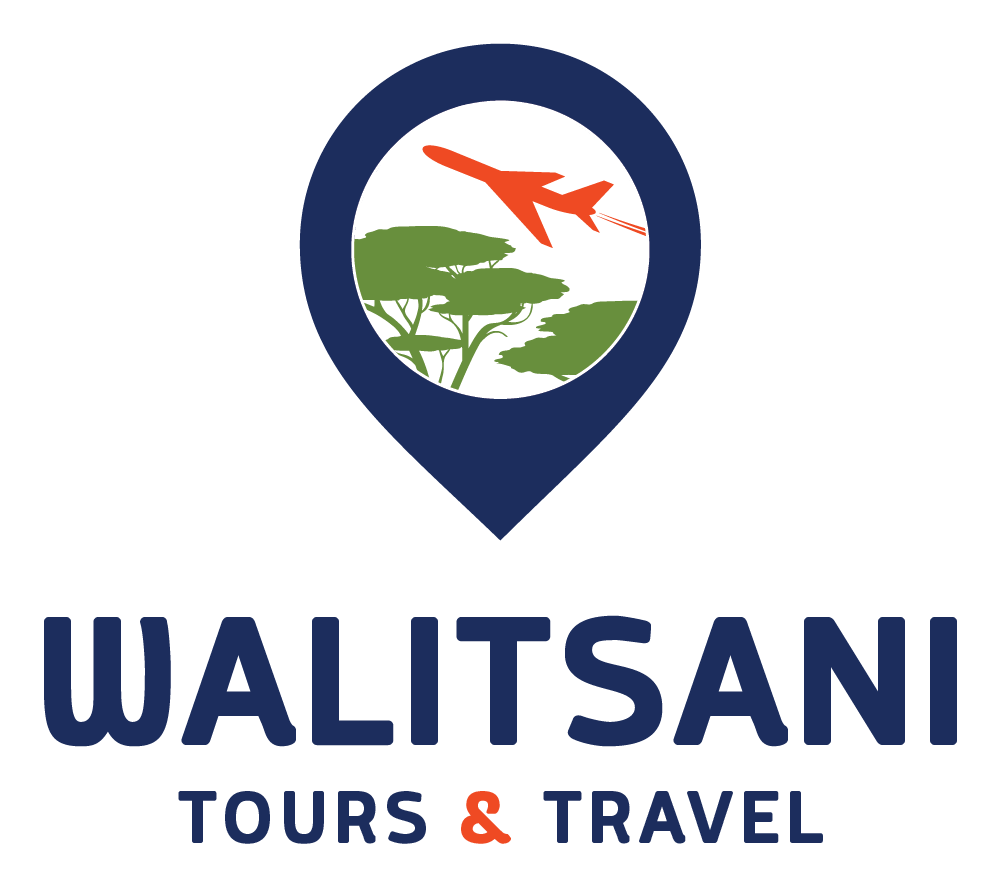
Experience the Excitement in Malawi & Southeast Africa
Visit Malawi and experience all that Malawi and Southeast Africa have to offer. From lounging on lakeside beaches to wildlife safaris, there is something for everyone to enjoy. Based in the capital city of Lilongwe, we are the experts when it comes to Malawi travel.
Malawi's 'Lake of Stars'
Dr. David Livingstone called Lake Malawi the ‘Lake of Stars’. Its impressive size, depth, and beauty all contribute to the popularity of this lake as a tourist attraction for people all over the word. Kayaking, cruising, snorkeling, scuba diving, and relaxing on the beaches are all popular activities to enjoy.
Plan Your Escape to Southern Malawi
Enjoy walking safaris, game drives, and mountain hiking at Majete Game Reserve. Sample some of the world’s best teas at Huntingdon House and take in the breathtaking views on Mount Mulanje. Southern Malawi is a destination that shouldn’t be missed!
The Wildlife of Liwonde
Liwonde National Park is an amazing place – with an even more amazing comeback story. From removing thousands of illegal wildlife snares to reintroducing cheetahs and lions, as well as hosting over 20,000 tourists per year, the ever-changing story of Liwonde will inspire you.
Liwonde National Park & Mumbo Island Adventure
Explore Liwonde National Park through walking safaris, Mumbo Island Malawi wilderness safaris, game drives, and a thrilling boat safari along the Shire River. Relax on Mumbo Island and enjoy snorkeling, diving, and kayaking in Lake Malawi’s pristine waters. This is the perfect Lake Malawi Vacation!
Mulanje - The 'Island in the Sky'
Malawi is the perfect place to immerse yourself in history, culture, and amazing outdoor experiences. Mount Mulanje is Malawi’s highest peak. From camping and hiking on Mulanje to enjoying peaceful relaxation at the surrounding tea plantations, you’ll want to discover the ‘island in the sky’ for yourself.
Back to Nature in Cape Maclear & Majete Wildlife Reserve
Enjoy game drives and a boat safari on the Shire River. Get a firsthand look at Malawian culture at the Kungoni Centre of Culture and Art. Experience all the wildlife, excitement, and relaxation that Lake Malawi has to offer! When it comes to Malawi safari packages, this is a great option!
Majete Wildlife Reserve
Majete Wildlife Reserve is more evidence of Malawi’s success in its wildlife & tourism revival. Since 2003, 16 species have been reintroduced. Poaching has been greatly reduced, tourism has increased, and the local community is thriving.
Featured Tours
Whether you enjoy quiet, peaceful beach vacations or busy trips filled with adventure, Malawi is a great place to visit. View our most popular Malawi travel packages and start planning your Malawi vacation today! Looking for an extended vacation, or only have a day or two? Contact us! We would be happy to create a custom travel package for you.
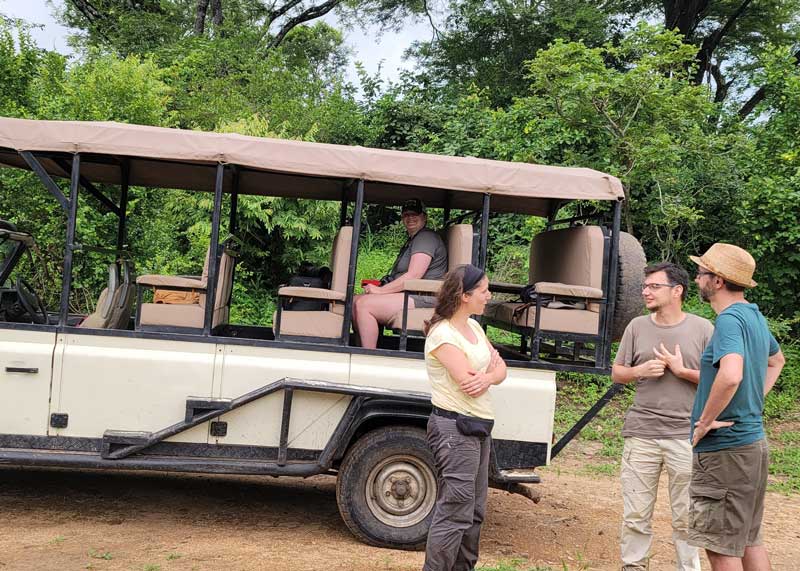
4 Night / 5 Day
Liwonde national park & mumbo island adventure.
Explore Liwonde National Park through walking safaris, game drives, and a thrilling boat safari along the Shire River. Relax on Mumbo Island and enjoy snorkeling, diving, and kayaking in Lake Malawi’s pristine waters.
Liwonde National Park, Mumbo Island, Lake Malawi
Walking safaris, game drives, cultural village visit, boat safaris, kayaking, watersports, snorkeling & diving, multiple dates available.
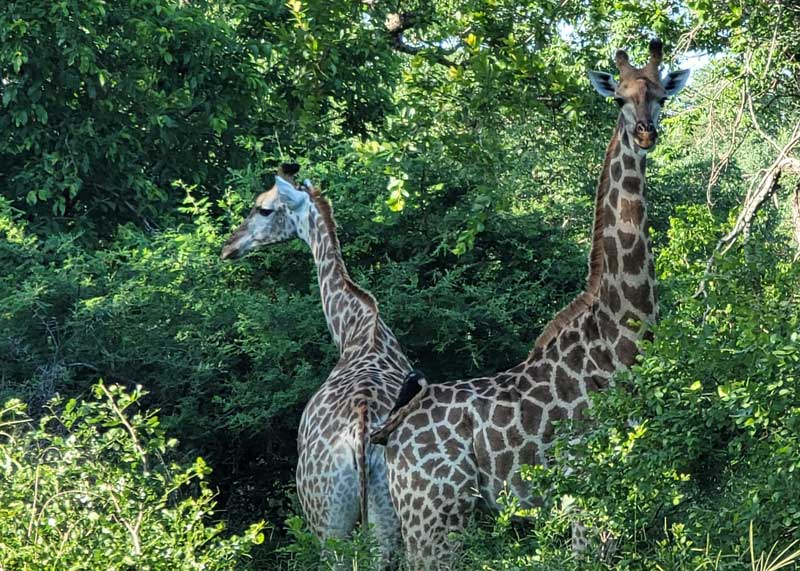
5 Night / 6 Day
Escape to southern malawi – wildlife viewing, hiking, & tea tasting.
Enjoy walking safaris, game drives, and mountain hiking at Mulanje Mountain. Sample some of the world’s best teas at Huntingdon House and take in the breathtaking views on Mount Mulanje.
Majete Game Reserve, Huntingdon House, Mount Mulanje
Walking safaris, game drives, cultural village visit, tea tasting, mountain biking, hiking, swimming.
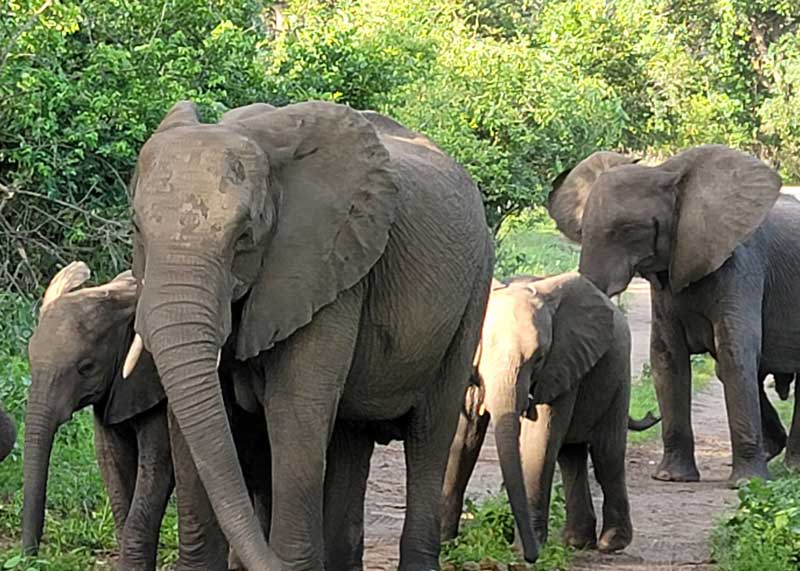
Back to Nature in Cape Maclear & Liwonde National Park
Enjoy game drives and a boat safari on the Shire River. Get a firsthand look at Malawian culture at the Kungoni Centre of Culture and Art. Experience all the wildlife, excitement, and relaxation that Lake Malawi has to offer.
Liwonde National Park, Kungoni Centre of Culture and Art, Lake Malawi
Kayaking, water sports, sunset cruises, snorkeling & diving, cultural visits, boat safaris, walking safaris, game drives, experience the excitement.
Our clients have had amazing experiences with us. From breathtaking views to unbelieveable wildlife encounters and everything in between, we can help you create the experience you’ve been dreaming of. Visit Malawi for ultimate relaxation or adventure!
We are dedicated to helping you create unforgettable memories in beautiful southeast Africa & Malawi. Trust us with your Malawi vacation arrangements and leave your stress behind. Walitsani Tours and Travel is your dedicated Malawi travel guide!
What We Offer
At Walitsani Tours & Travel, we offer a variety of Malawi travel packages to help you make the most of your Malawi vacation. Check out our featured packages and start planning an unforgettable getaway!
Why Travel with Walitsani?

Hassle-Free Planning
We take care of every detail, from finding the best airfare to booking activities.

Knowledgeable Guides
All our guides are true local experts and will share their knowledge with you!

Unforgettable Experiences
Our African tours are designed to fuel your mind and delight your senses.
Curated Experiences
At Walitsani Travel, we specialize in planning amazing travel experiences in Malawi & Southeast Africa. Ready to plan your adventure? Talk to one of our friendly agents today.
Follow Along!
Thinking about a trip to Malawi? Malawi has so much to offer any traveler. Whether you like outdoor adventure or pure relaxation, Malawi is the perfect destination for your next vacation. Follow us on Instagram for specials, travel tips, and more!

Malawi Tour Packages
Get the best holiday planned by experts, iata certified travel agency.

We are IATA certified Travel Agents. IATA Number : 96131258
10+ Years of Tour & Travel Booking Experience

Expert Guidence, Custom Packages, Best Deals.
More than 50+ Destinations

Specialized multilingual guides, only the best service you can get. 50 + Countries
Malawi Best Travel Destination
Travel and experience extravagant mix of cultures in scenic landscapes and historic wonders .. Discover with ! It promises a breathtaking landscape, adorned with picturesque coastlines. A growing multicultural marvel, the country is renowned for its beautiful blend of cosmopolitan cities, wild and enchanting hinterlands, thriving wildlife and charming beaches One of Malawi’s highlights is its beautiful mix of adventure activity opportunities and museums, art galleries and historic sites. Malawi vacation packages are very popular with travelers due to their unique and exotic experiences. .. Our team of travel experts will help you book your dream vacation in by considering all your travel needs. We can offer you the best package at the lowest price. Pack your bags now , and travel solo , with family and friends.
Did you pack your suitcase? Complete your preparation with us now.
Top attractive destinations.
As the political capital and the largest city of Malawi, Lilongwe stands as a pivotal center for governance and cultural vibrancy. The city is characterized by its vibrant markets, where the colors and sounds of local life converge. Lilongwe's significance extends beyond its administrative role, as it embraces a rich cultural tapestry evident in its festivals, traditional dances, and artistic expressions. The Lilongwe Wildlife Centre adds a touch of nature conservation to the city's allure, offering a unique blend of urban life and natural beauty.
Ranked as the second-largest city, Blantyre is the economic heartbeat of Malawi. Steeped in history, the city showcases colonial architecture that tells tales of its past. The bustling urban atmosphere, marked by a dynamic blend of commerce and culture, makes Blantyre a fascinating destination. The city's markets, including Limbe Market, are vibrant hubs of activity, reflecting the energy of the local economy. Blantyre's historical sites, such as the Mandala House, provide glimpses into Malawi's colonial legacy.
Book You Travel Package with Best Travel Agency
Customized travel packages starting $350, personalised malawi holiday packages, package starting $350 , peaceful malawi vacays are now just hours away.
Positioned in the northern part of Malawi, Mzuzu captivates with its picturesque surroundings. Nestled amid mountains and near the shores of the beautiful Lake Malawi, Mzuzu is a city that embraces nature's beauty. The city serves as a gateway to the northern regions, attracting travelers with its scenic landscapes and a more relaxed pace of life. Mzuzu's location makes it a strategic point for exploring the wonders of northern Malawi, including the Nyika National Park and Vwaza Marsh Wildlife Reserve.
Once the capital of Malawi, Zomba remains a city of historical importance and scenic landscapes. The legacy of its time as the capital is preserved in the colonial architecture, including the University of Malawi, housed in the former Zomba Government House. Zomba Plateau, a natural gem, offers stunning views and is a haven for outdoor recreational activities. The city's botanical gardens add a touch of tranquility, making Zomba a blend of historical charm and natural beauty.
Custom Malawi Packages
Malawi 2023, enjoy malawi holiday with our custom tour packages..
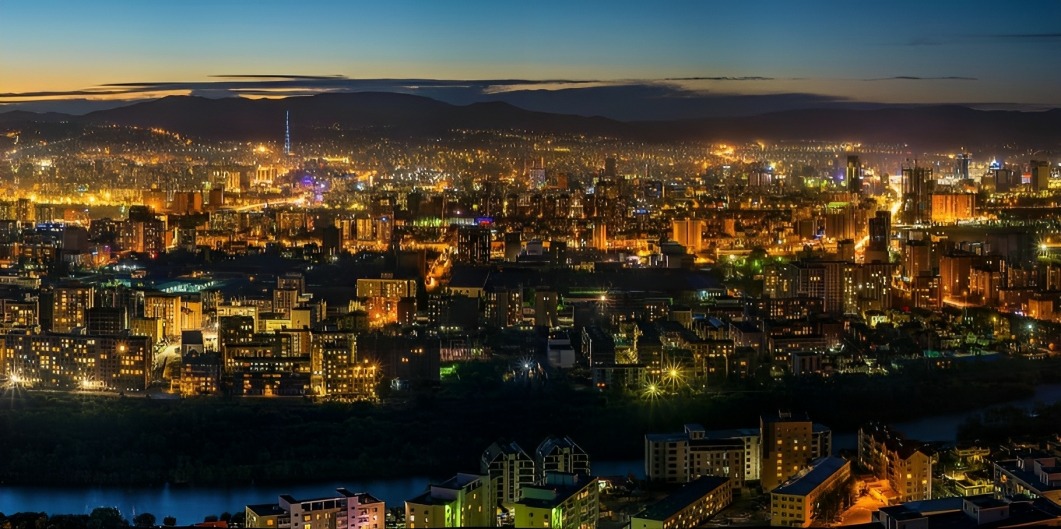
Individual Travel Planning
Includes Complete Trip Planning. Travel, Stay, transfer, in country support by our travel partners.*
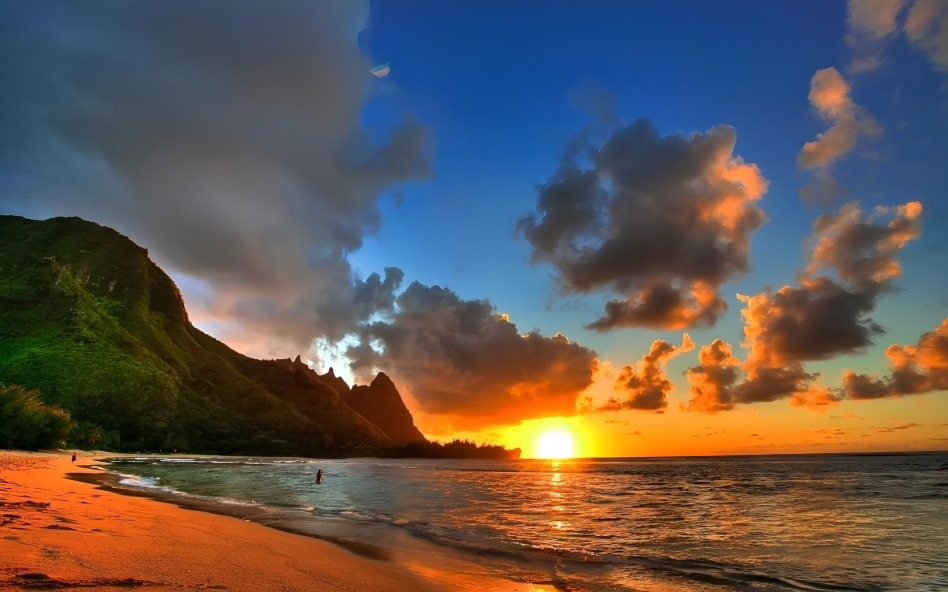
Family Trip Planning

Group Trip Planning
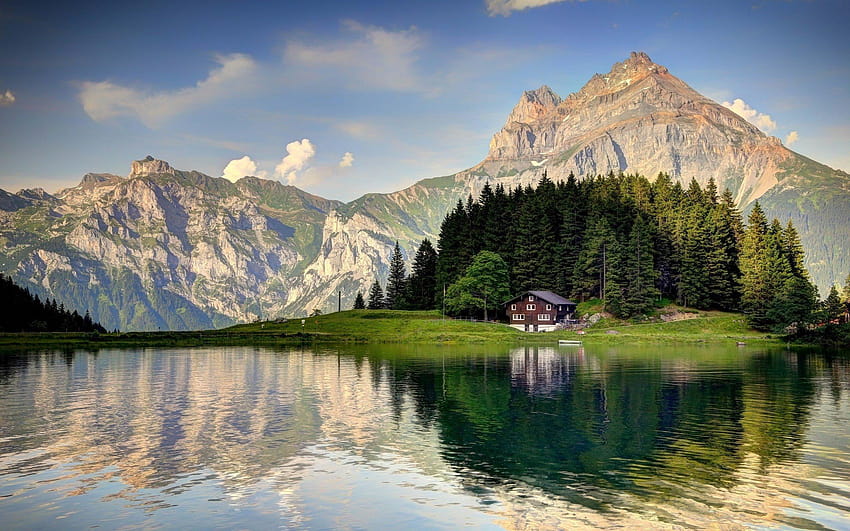
Corporate trip planning

Request A Consultant
Our Team will be in Touch
Why choose us
Iata certified travel agent.
We are a IATA certified Travel Agent with more than 10+ of experience in Tour & Travel Industry. You can trust our team to provide you best custom deals.

10+ Year of Travel Experience
Travel to your dream destinations and leave everythig else to our highly experience travel consultants. 50+ Destinations Travel Deals.

Professional Team
Our Team of Expert Travel Consultants are available 24/7 either through chat, email or phone support to answer all your travel queries.

Tailor Made Travel Packages
We understand that every indidual is different and so are our tailor made travel packages to suit your specific travel asks and save unnecessary spends.

Comprehesive Travel Support
We do not just plan & book your travel package, we also ensure that while you are on vacation, our team is in constant touch with you to provide all kind of support.

Easy Payment Options
Pay only 10% advance to let our travel expert book your travel itenary. Pay rest once you we book your complete travel itneary. Cancel any time, 100% refund.
CUSTOMER TESTIMONIALS
Our Customer Has Great Stories About Us. Read Our Customer Reviews.
Mika Baldin
"Booking through you was very easy and made our lives so much easier. I have nothing bad to say! Thank you for giving us tips and guidance before we left on what to bring and such, that was very helpful! Thanks again, Meg S. "
Maria Louise Taylor
"Fiona, Hi. We had a wonderful time! I highly recommend the Resort at Longboat Key & the area. It was perfect for not being crowded on the beach w/ Covid concerns. The beach is for guests only & beautiful!....Thanks so much for finding the perfect spot for us for spring break :)"
ALESSIA BESANZINI
"Jason , thank you so much for a well organized trip. We had a wonderful time. Hard to believe it's already done and past. Weather was awesome, the hotels were nice, thank you for everything!."
UK office Address
71-75 Shelton Street Covent Garden London UK WC2H9JQ.
UAE OFFICE ADDRESS
Sharjah Media City Shams United Arab Emirates
UK OFFICE ADDRESS
S Tower Udyog Vihar Phase 3 Gurgaon, India
phone number
+1 601 588 7418 +44 741 835 5351
[email protected]
Get in touch
We can ensure reliability, low cost travel deals and most important, with luxury and comfort in mind..
Contact Us Today – Speak to our highly experianced Travel Agents, who can help you book your dream vacation to malawi. Choose from several travel packages as per your budget and travel needs.
Cookies & Privacy
This website uses cookies to ensure you get the best experience on our website.

Let our Team Call you

Free of Toxic Links
Safety Score
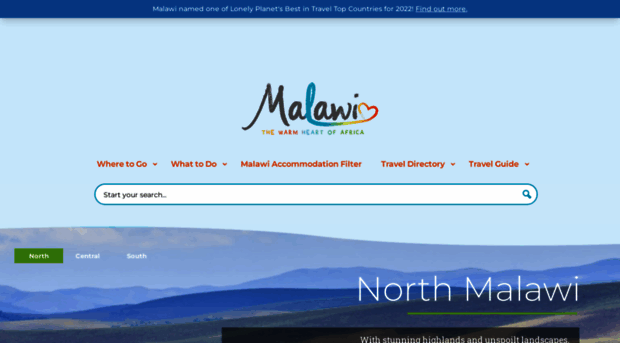
About Website
Malawi Tourism | Welcome to Malawi - Africa's Most Complete Desti...
The website of Malawi's travel & tourism industry: lodges, hotels, tours, safaris & transport. Discover amazing Wildlife, Lan...
Malawitourism.com provides visitors with a great user experience and high-quality content.
Malawitourism.com handles sensitive information of its users according to the highest standards of user privacy.
Malawitourism.com is a family-friendly resource. It contains NO foul language, adult-oriented material, or other disturbing content
None of our sources reported any signs of injections.
None of our sources reported any signs of attempts.
None of our sources reported any signs of activities.
None of our sources reported any signs of content.
Malawitourism.com features a Secure Sockets Layer (SSL) certificate.
Who are we?
Sur.ly is a safe linking and user-protection service providing a web-browsing gateway for regular users and a database of website profiles aggregated from a multitude of sources. Sur.ly protects users from many potential threats on the Web, like phishing, malware, or unsolicited adult content, so we know a thing or two about all websites on the Web, including yours!
Safety Verdict by sur.ly

What's checked
A service that reports on the safety of websites by crawling the web and testing the sites to find malware and spam.

A blacklist service provided by Google that provides lists of URLs for web resources that contain potential threats.

A community-based phish verification system where users submit suspected phishing attempts and other users "vote" if it is phishing or not.
We found no adult-oriented (18+) content.
We found no copyright infringements.
We found no references to online casinos.
We found no mentions of prohibited substances.
Most popular pages
Malawi Tourism | Welcome to Malawi - Africa's Most Complete Destination
The website of Malawi's travel & tourism industry: lodges, hotels, tours, safaris & transport. Discover amazing Wildlife, Landscapes, Culture and Lake Malawi beaches.
Malawi: Sunbird Tourism PLC Posts Mk5.3 Billion Profit.
Sunbird Tourism(plc), a publicly quoted enterprise listed on the malawi stock exchange, has announced that it has chalked a profit after task of MK5.3 billion during the financial year ended 2023.
This represents a significant 72 percent increase from the Mk3.1 billion it recorded in the year 2022.
Chairman of the board for the oldest hospitality entity Vilipo Munthali disclosed this in Blantyre during the 36th annual general meeting for the company.
Munthali further disclosed that the firm saw it's share price increased from Mk92.06 in 2022 to Mk191.07 at the end of 2023.
" This is probably due to the increase in occupancies to pre-pandemic levels among other factors, " he said.
Munthali further said the profitability was also driven by increase in revenue and cost of containment despite escalating production and operating costs that the company suffered due to high inflation, shortage of forex and high interest rates.
The board chairman reported that the total revenue of the company grew by 36 percent to Mk34.8 billion in 2023 from Mk26.7 billion in 2022 on account of increased occupancy to 57 percent from 48 percent achieved in the prior year and growth in catering revenue by 31 percent from prior year.
Among others, the board chairman also announced the increases in cost of sales and financial costs achieved during the financial year ended 2023.
According to him, once the construction of the new Mk7 billion conference centre at sunbird Livingstonia, will immensely change the guests' experience.

Sign up for free AllAfrica Newsletters
Get the latest in African news delivered straight to your inbox
By submitting above, you agree to our privacy policy .
Almost finished...
We need to confirm your email address.
To complete the process, please follow the instructions in the email we just sent you.
There was a problem processing your submission. Please try again later.
Looking ahead, Munthali said the hospitality outfit poses to fully recover further in the profitability to pre-pandemic levels in the year 2024.
Additionally during the AGM, shareholders endorsed a total dividend of Mk2.019 billion for the year 2023, equating to Mk7.70 per share.
During the year 2023, a final dividend of Mk393 million or Mk1.50 per share was paid in respect of the year ended 31 December 2022, making the total dividend for year 2022 to be Mk523 million or Mk2.00 per share, according to the company's financial report.
In his contribution, secretary general for the minority shareholders of listed companies(MISALICO) Frank Harawa thanked the company for the continued remarkable slides.
Harawa however, urged the company to open up so that its shares were ready available on the stock market.
Read the original article on Nyasa Times .
- Southern Africa
AllAfrica publishes around 600 reports a day from more than 100 news organizations and over 500 other institutions and individuals , representing a diversity of positions on every topic. We publish news and views ranging from vigorous opponents of governments to government publications and spokespersons. Publishers named above each report are responsible for their own content, which AllAfrica does not have the legal right to edit or correct.
Articles and commentaries that identify allAfrica.com as the publisher are produced or commissioned by AllAfrica . To address comments or complaints, please Contact us .
AllAfrica is a voice of, by and about Africa - aggregating, producing and distributing 600 news and information items daily from over 100 African news organizations and our own reporters to an African and global public. We operate from Cape Town, Dakar, Abuja, Johannesburg, Nairobi and Washington DC.
- Support our work
- Sign up for our newsletter
- For Advertisers

- © 2024 AllAfrica
- Privacy Policy

IMAGES
COMMENTS
African's Warm Heart, Malawi, is beating faster now and the legendary welcome is there for all who wish to experience the unrivalled combination of Lake, Landscape, Wildlife & Culture in one of Africa's most beautiful and compact countries. Recently crowned as one of Lonely Planet's Best in Travel Top Countries for 2022 (a remarkable second appearance on that prestigious list in recent years ...
Malawi's temperatures are moderated by altitude. Only in the hottest month (usually November) will maximum temperatures get above 30°C, and then only in the hotter (low lying) locations. In the coldest month (probably July) maximum temperatures will be in the low 20's. On the uplands (e.g. Zomba, Nyika and Viphya) it can be quite cold at ...
The jewel in the crown of the country's tourist experiences is Lake Malawi, "discovered" by the missionary-explorer Dr David Livingstone just over 150 years ago. Although totally landlocked, Malawi is not denied its "inland sea". This vast body of freshwater fringed by beaches of golden sand is not only a scenic wonderland but it ...
Requirements for vehicle documentation should be checked before travelling. As of March 2016, the following are the requirements for a vehicle to enter Malawi: Third Party Insurance - obtained at the border at a cost of MK21,000.00. Temporary Importation - obtained at the border at a cost of MK10,000.00. Vehicle Registration Certificate.
Lake Malawi is the jewel in the crown of the country's tourist attractions. This is the 'inland sea' of the otherwise land-locked Malawi. This vast body of crystal clear freshwater fringed by beaches of golden sand is not only a scenic wonderland but it provides water sport opportunities for those looking for something beyond sun, sand ...
Malawi's Culture. Malawi's greatest asset is its people. They are wonderfully friendly and warmly welcoming. All visitors are met with smiles and a truly genuine and long-lasting welcome. With a population of over 18 million, Malawi is one of the more densely populated countries of this part of Africa. Most of the population is rural, living ...
The pages in our Travel Guide and Travel Directory sections have plenty more useful info to help you plan your visit to Malawi. Use the main menus or the options below to get to the pages you need. We also have a number of useful digital documents that you can download and use offline, including the Best fo Malawi brochure/directory and a full ...
About Us. Malawitourism.com is Malawi's primary website for travel and tourism and provides the best online resources for all potential visitors to the country, as well as for members of the media and travel trade interested in Malawi. The site is run in the UK by Geo Group Marketing Ltd on behalf of the Malawi Travel Marketing Consortium ...
Safaris. Two of the great attractions of Malawi's national parks and wildlife reserves are their completely unspoilt wilderness and the absence of mass tourism. When you take a safari in Malawi you really do feel you're looking at a scene that David Livingstone would recognise from 150 years ago. There's a real touch of the Garden of Eden ...
10. Blantyre. Blantyre is Malawi's second-largest city, a commercial hub and the gateway to the attractions in the southern part of the country. Travelers driving to Majete, Thyolo, Mt. Mulanje, Michiru Mountain and Zomba Plateau will all pass through Blantyre en route to their destinations. History runs deep here.
Department of Tourism , Tourism House, Off Convention Drive , Private Bag 326 Lilongwe , City Centre Malawi, Africa [email protected] +265 1 775 499
Africa. What captures visitors most about Malawi is its geographical diversity: the vast shimmering lakes, dramatic mountain peaks, and the roaming lions of Majete Wildlife Reserve. Best Time to Visit. Best Places to Visit. Attractions.
Malawi, officially known as the Republic of Malawi, is a country located in southeastern Africa.The country is also referred to as "The Warm Heart of Africa", due to the friendliness of the people.. Malawi has a variety of tourist attraction sites including Lake Malawi (29,600 km 2), several national parks, game reserves, and Mulanje Mountain.The tourism industry in Malawi has significantly ...
Malawi Tourism, Lilongwe, Malawi. 26,615 likes · 2,531 talking about this. Ministry of Tourism
10. Avoid driving at night. The greatest danger in Malawi is likely to be on the roads, where speeding and wildly passing cars are common. Driving at night on the unlit roads should be avoided altogether. When planning your trip, consider using Malawi's coach system and the lake ferry rather than driving yourself.
Malawi Travel. 9,209 likes · 211 talking about this. All you need to know about making Malawi your holiday destination
66. Nature & Wildlife Areas. Kuti Wildlife Reserve is located in central Malawi. This nation is known as 'The Warm Heart of Africa', both for its stunning beauty and friendly people. Kuti is home to a variety of animals native…. 6. Lilongwe Wildlife Centre. 122. Nature & Wildlife Areas.
For first-time visitors to Africa - and for anyone who is drawn to nature and outdoor adventures - Malawi is a wonderful destination. This tiny sliver of a country has many superb places to visit, offering scenic diversity, from the vast, idyllic Lake Malawi and the zebra-dotted high plains to the epic heights of Mt Mulanje and the escarpment views at Livingstonia.
Self-drive. Malawi is fairly easy to drive around. The speed limit for main roads is 80km/h and in towns drops down to 50km/h. Although the change is not always signposted, it's best to slow down in towns and wait to regain speed until well after an inhabited area to avoid speed traps set up by the police.
Malawi has so much to offer any traveler. Whether you like outdoor adventure or pure relaxation, Malawi is the perfect destination for your next vacation. Follow us on Instagram for specials, travel tips, and more! Visit Malawi and experience all that Malawi and Southeast Africa have to offer. From lounging on lakeside beaches to wildlife ...
5,521 Followers, 194 Following, 251 Posts - Malawi Travel (@malawitourism) on Instagram: "Showcasing 'The Warm Heart of Africa' with it's stunning lake, wonderful wildlife, luxurious landscapes & captivating culture."
Discover information about Malawi, including its geography, economy, culture, and more. Explore travel guides, natural wonders, and interesting facts about this landlocked country in southeastern Africa known for its stunning lake, diverse wildlife, and friendly people.
Malawitourism.com handles sensitive information of its users according to the highest standards of user privacy. Child safety. 98 /100 Malawitourism.com is a family-friendly resource. It contains NO foul language, adult-oriented material, or other disturbing content Trust and ...
Sunbird Tourism Limited (SUNBRD.mw) listed on the Malawi Stock Exchange under the Tourism sector has released its 2023 annual report. For more information about Sunbird Tourism Limited (SUNBRD.mw) reports, abridged reports, interim earnings results and earnings presentations visit the Sunbird Tourism Limited (SUNBRD.mw) company page on AfricanFinancials.
Sunbird Tourism(plc), a publicly quoted enterprise listed on the malawi stock exchange, has announced that it has chalked a profit after task of MK5.3 billion during the financial year ended 2023.